Initiated in 2012 as the Dutch Design Summer School, our summer programmes offer an intensive series of workshops and talks that expose participants to different visions within visual culture, humanities and public debate. As with all our programmes, the aim is to stimulate unexpected, cross-disciplinary collaborations.
In a temporary reprieve from the pressures and conventions of the industry, new ways of thinking and acting emerge.
The course takes place every year at an institution of cultural significance that is embedded within the international field.
Summer Camp for Radical Hope: Resting, Resisting, Re-building
3—14 July 2023
Sengersbroek, Asten-Heusden, the Netherlands
Q&A Session
On April 20th, we held a Q&A online session where together with Baltan gave more insights about the programme. If you could not join and want to receive the recording of the session, please send an email to apply@openset.nl.
About
The Summer Camp for Radical Hope, launched by Open Set and Baltan Laboratories, is a call for designers, artists, cultural and social practitioners, and educators to enrich their creative practices and ongoing research in a collaborative, transdisciplinary manner. The 12-day research camp will take place on a farm –a site where theory and practice align–to allow participants to move through their own practices and rehearse new forms of relating, co-operating, working and living together within an ecological, political and sociological context.
The Summer Camp offers a support structure for thinkers and makers, who strive for meaningful and just practices that are adequate in responding to local and global crises. Regardless of whether they have art or design degrees, we connect participants to mentors, discourses and professional networks. The selected participants will have the opportunity to engage with theory but most importantly, embody language through practice in the act of living and working together as a collective towards an open form project that will be incorporated in 2023’s Dutch Design Week (DDW).
The Summer Camp is hosted on the agricultural space (2.5 hectares) of Sengersbroek, a small-scale ecological pig farm in Asten-Heusden, the Netherlands. The farm, which contains a landscape of vegetable produce, animals and uncultivated land (0.5 hectares), is a residence for both humans and more-than-humans where rest and activity are in communion.
The complete information about the Summer Camp you can find in the pdf.
Structure & Approach of the Camp
For 12 days participants will gather and live together on the Sengersbroek farm, engaging in the daily activities of farm work as well as group workshops, talks, readings, and practices of creating together leading up to the collective project for Dutch Design Week. There will be time in the fall between the camp’s end date and DDW to work on the final stages of the project in tandem with Baltan and Open Set mentors.
Participants and young professionals in art, design, architecture, academia, science, research and sustainable development are welcome to apply to the summer camp where we will gather together despite our multiple differences to exercise the possibilities of world-making through ecology, embodiment and economy. Workshops and talks will have invited guests and experts as well as have a self-initiated format where the participants share their practices, rituals and thoughts that engage with the theme.
A regular summer camp day includes: workshops with participants and external guests, reading circle, discussion time, farm work, being time (rest), rituals / practices / time to work on collective project.
Guests and Network to connect
During the summer camp, several guests are invited to spend some time at the farm and share their perspectives on ecology, embodiment and economy. They will give lectures, host workshops and join the participants in their activities on the farm. This will give participants the opportunity to engage in more informal conversations and talk with them about their practice and projects.
- Susan Shuppli — artist-researcher
- Sandi Hilal — artist, architect and researcher
- Amenti —community-based organization
- Klaas Kuitenbrouwer —researcher
- Salomé Voegelin —artist and writer
- More to be announced
The Baltan and Open Set teams will be present during the summer camp. You will have the opportunity to connect with them, their practices and research trajectories, and through Baltan and Open Set with their network.
- Baltan Laboratories Network. Baltan operates on a local, national and international level. They are strongly rooted in the Dutch cultural field through partnerships and collaborations with fellow institutions (such as Make Eindhoven, de Fabriek, United Cowboys, AiR Brabant network, Fossil Free Culture) and have a close connection to the art and design students and academies in the Netherlands (Design Academy Eindhoven, AKV st. Joost, Piet Zwart Institute a.o.). On a European level, they are active in multiple European projects, working together with academia (University of Bologna, LUCA school of Arts Brussels, University of Dublin, KU Leuven, Aalto University, Porto Polytechnic, University of Lapland a.o.) and cultural organisations (MEET, ETOPIA, Sineglossa, Pro Progressione, RIXC, Ohme a.o.). In all these activities, relations, and programs, Baltan aims to support art and design as agents of change - focussing on their ability to rethink and practise ways of ‘living otherwise’.
- Open Set Network. Open Set community is highly international, with more than 350 former participants who grew their practices in leading positions while keeping the connections that emerged from Open Set endeavours. Apart from connections with international educational, professional, and media organisations and institutions, their Dutch-based collaborators' network includes a range of nation-to-local cultural centres, organisations and research institutions. To name a few: CBK Zuidoost, Ala Kondre, No Limit and Imagine IC; Showroom MAMA, (former Witte de With Center for Contemporary Art), TENT, WORM, V2_Institute, Print Room, Zone2Source; and larger organisations, such as the Netherlands Institute for Sound and Vision, Het Nieuwe Instituut, and City of Amsterdam; and research/educational bodies, such as University of Amsterdam, The Institute of Network Cultures, TUDelft, Amsterdam Institute for Advanced Metropolitan Solutions, Dutch Design Academy, KABK, The Willem de Kooning Academy, and others.
Why Radical Hope?
We will begin with and on the Sengersbroek farm. At every moment of crisis is a pocket of revolution, and the farm demonstrates a space in which the body meets the earth, as well as the relationalities of life. We see the farm as a crack in the infrastructure – a space in which large dominant forces have exerted their power but also a space in which transformation is possible – in which hope exists. A radical hope, in which radical has both a political and botanical meaning (from the Latin etymology of the word, deriving from radix, root): it describes both the longing for drastic change and its profound and rooted connection with the earth.
How does body meet Earth, differently? How do we meet our bodies, differently? How do the human and more-than-human entanglements inform systems? How does Earth’s seasons from summer to winter mirror our practice of rhythms–from activity to rest? The summer camp is meant to exercise and rehearse acts of resistance and creation as a collective, regardless of how small or large the scale is. Whether you’re an educator, artist or designer, you are in the world and to be in the world is to be with others. Or rather, there is no being outside of being-with, which means that to be (embodiment) and to be with (ecology) are central to the tactics of an anti-capitalist fight.
On the farm, we are presented with a moment of bearing witness to the many forms of multispecies interactions and the ways in which this informs emergent strategies, which is “a framework for resistance that is rooted in the miracles of nature”. On the farm, we are also introduced to circular rhythms of life that cannot be linear because what is pivotal to agriculture–a process of seeding, growing, harvesting and laying fallow–is rest and in rest, we find wisdom. Like the Earth that must lay rest for the upcoming seasons, our bodies and our practices need rest, where we encounter a moment of deep listening and guidance to move and mobilise us towards growth. In the words of Tricia Hersay, “resting is a love practice that is going to save our lives and save this world”. But deep within these moments of rest-to-harvest, are a series of exchanges–of nutrients, minerals, labour and energy that define ‘value’ outside of commodity and instead as an equal exchange that doesn’t entail surplus but dialogue. How the fungi will never give more carbon than the phosphorus it receives from tree roots, because equal exchanges are a language of nature alternative to the ‘burn out’ or ‘planetary burn out’ that has become an epidemic on the planet earth.
In the Summer camp for Radical Hope, we will inhabit and challenge these three facets of ecology, economy and embodiment as materials for making and designing a socially just future asking the questions: how does listening to the earth connect to the acts of listening to the body? What are the mirroring aspects or, perhaps, the bio-mimicking aspects of a decentralised organisation in ecology, and the potential for decentralised institutions within humanity? How do we come to re-evaluate value, where capitalism is constantly assigning values to things irrespective of how the things themselves work? How do ‘rest’ and restoration in the body resonate to the ‘rest’ and restoration of our soils? Together, we will rest, activate, language and move in embodied ways that connect us to the Earth, and new forms of arts practice and design. New worlds won’t come from exhaustion but they will come from imagination, rest, and hope.
Application & fees
The fee for the program is €1,800, which includes registration, accommodation on the farm and Dutch Design Week participation. Travel and food are not included. One full stipend is available and should be communicated in the application if needed. We are happy to support applicants in applying for funding or support to finance their fees.
Application (extended) deadline: 8 May 2023
Who and how to apply? Approximately 20 participants will be selected based on their motivation, as well as their profiles and practices. The selection will be based on experience and intent within the themes of the program. The group diversity and coherence will be attempted in this process. It is advisable to have a medium level of English, oral and written.
Interested applicants must submit the following documentation via an email to info@baltanlaboratories.org
1. Motivation letter or a video strong>which contains (max 2 A4 or a video of max 10 min):
—Introduction of yourself and your practice (artistic, theoretical, scientific, pedagogical…)
—How do you relate to the topics of the Summer Camp
—A research question that connects your work to the theme of the Summer Camp
2. Curriculum vitae.
3. Research or artistic portfolio with a maximum of 5 projects.
Submissions will be accepted until May 8th, and selection will be announced on a rolling basis within five days of the deadline.
Should you wish to participate in the Camp, but do not have a possibility to pay the fee, please specify this in the motivation statement.
Credits
Concept & Hosting:
Marlou van der Cruijsen (co-director at Baltan Laboratories),
Lorenzo Gerbi (designer, art director, curator and co-director at Baltan Laboratories),
Victoria McKenzie (architectural researcher at RRA, educator, artist, co-curator of Open Set 2023),
Irina Shapiro (designer, educator, programme director Open Set, tutor at Piet Zwart Institute, researcher at RASL)
Production: Sarie Hermens, Julia Kassyk
Design: Gabriela Baka, Aneta Sieniawska
Summer School: Fluid Rhythms
15—25 Aug 2018
Amsterdam Zuidoost (South East)
The Summer School 2018 was the catalyst for a seven-month programme ‘Fluid Rhythms’ in the fields of arts, design, urban planning, performance, and humanities. This intense programme provided a unique opportunity to experience a diverse set of concepts and methods related to ‘rhythm’, within the context of the Bijlmer, — one of the most vibrant neighborhoods in Amsterdam, once envisioned as an urban utopia and (in)famous for being called the "city of the future".
Building on the Summer School, the thematic research continued during the related LAB trajectory (for developing new practice-based research projects) and the Seminar ‘Rhythmanalysis in Context’ (October 2018–February 2019).
Fluid Rhythms: Urban Networks and Living Patterns
“The crowd is a body, the body is a crowd” — Henri Lefebvre
Life in the city both repeats itself, and is constantly changing. Situated in the Bijlmer, one of Amsterdam's most vibrant neighborhoods, Open Set launched a special programme, dedicated to exploring the potential of rhythm in the city. The movement of bodies in space; financial transactions; the circulation of sounds, cells, and smells; changing social constructs that divide and connect people; the flow of microscopic substances—such looping patterns generate dynamic complex structures, or ‘rhythms’, that shift over time. In the words of Caroline Nevejan: “Where there is rhythm, there is life”. Understanding and working with such dynamic complexities requires careful attunement to the interactions between social, imagined, and physical realms.
The participants of this international and interdisciplinary programme engaged in the exploration on the potential of rhythm-led practices as common ground for research and artistic work. This means both providing tools to perceive rhythms, as well as tools to tap into their generative potential. Rhythms occur on multiple levels at the same time, in the macro-level structures of the city, within the cells of bodies, and in the interconnections between mind, emotion, brain and heartbeats. By investigating the intertwined patterns of change, a world of subtle complexity starts to reveal itself to us in how humans, machines, animals, and microbes interact and coexist.
The programme welcomed artistic interventions of any form, whether they are sound, food or image-based formats, performances or digital applications — offering the opportunity to discover new, invisible or forgotten rhythms, to find the points of friction and blind spots and to transform and harness the power for social and ecological change. Eventually, working with rhythms is a way of synchronizing our efforts in acting and living together in a network society.
Experts
- Nadia Al Issa / Christidi — artist & writer
- Heather Barnett — artist, researcher & educator
- Hendry Bagwandin — Surinamese Song Bird master
- Dash N’ Dem — design action group
- Mavis Hofwijk & Candice Hofwijk — chefs
- Anton Kats — artist
- Satinder Gill — researcher
- Mizztamizzo — MC/producer, solo artist
- Caroline Nevejan — researcher
- Pei-Ying Lin — designer & artist
- Thought Collider — art, design & research duo
- Noam Toran — artist
- Justina Uka — chef
Schedule
| Date | Time & Activities | |
| 14 AUG | 15.00-21.00: Welcome tour & drinks | |
| 15 AUG |
10.00-18.00: Simultaneous 3 day workshops, day 1 — Nadia Christidi with contribution of Hendry Bagwandin | 'I Know Why the Caged Bird Sings' (location: No LIMIT) — Anton Kats | 'People taller than buildings: Listening and Sonification in Public Space' (location: Google LAB & Municipality South East) |
|
| 16 AUG |
10.00-15.00: Simultaneous 3 day workshops, day 2 — Nadia Christidi (location: No LIMIT) — Anton Kats (location: Google LAB & Municipality South East) 16.00-20.00: Public Symposium (location Imagine IC) |
|
| 17 AUG |
10.00-18.00: Simultaneous 3 day workshops, day 3 — Nadia Christidi (location: No LIMIT) — Anton Kats (location: Google LAB & Municipality South East) |
|
| 18 AUG | day off | |
| 19-20 AUG | 10.00-18.00: 2 day workshop by Heather Barnett | 'City as Superorganism' (location: Google LAB) | |
| 21 AUG |
9.00-13.00: Seminar Introduction: 'Rhythm as Territory' (location: Imagine IC) 14.00-17.00: Film screening. Led by Mike Thompson & Noam Toran | Renderings of the Other in Cinema |
|
| 22-24 AUG |
10.00-18.00: Simultaneous 3 day workshops — DashN’Dem in collaboration with Mizztamizzo | 'Mass Voice' (location: The Ballroom) — Pei-Ying Lin with the contribution of Justina Uka, Mavis & Candice Hofwijk | 'M'icro-performances / Macro-connections' (location: The Ballroom) |
|
| 25 AUG |
11.00-16.00: Wrap-up discussion & feedback (location: Google LAB) 16.00-20.00: Goodbye drinks |
Why Participate?
- Unique opportunity to work in the context of Amsterdam Zuidoost, exchanging with a wide range of experts and researchers, local cultural centers, and scientific partners;
- ‘One-on-one’ interaction and guidance from leading international designers, artists, critics, and academics;
- Collaboration with peers from all over the world, building an international network of post-graduate level artists, designers and scholars;
- Experience in different methods, theories and techniques for working with rhythms;
- Experience in reflecting on your practice, focusing on potential directions of its development and on presenting it to the broader professional and general audience;
- Opportunity to contribute to the online publication and platform with the work generated within the context of this programme.
Scientific Partners
The principal scientific partner for the 2018–2019 Open Set programme is the research group Designing Rhythm for Social Resilience (2018–2022), with affiliated institutions OIS Amsterdam, University of Amsterdam, Delft University of Technology, Amsterdam Institute for Advanced Metropolitan Solutions.
Location
The programme will be contextualised around the modern, historical, social and environmental frameworks of one of the most vibrant neighborhoods – the Bijlmer in Amsterdam Zuidoost (South East). All events are hosted and supported by the municipality and local cultural centres, and informed by people actively involved in the life of local communities.
Credits
The programme is made possible by the support of the City of Amsterdam Zuidoost, Amsterdams Fonds voor de Kunst, Het Pauwhof Fonds, CBK Zuidoost, and has been organized in collaboration with the research group Designing Rhythm for Social Resilience (2018–2022). The visits of Nadia Christidi and Heather Barnett are made possible by Het Nieuwe Instituut with support of the Ministry of Foreign Affairs.
Curatorial Team: Irina Shapiro, Mike Thompson and Noam Toran
Design: Studio The Rodina
Editor: Shailoh Phillips
Memories of the Future Vol.2
23.07.—06.08.2016, Rotterdam, the Netherlands
The theme of Open Set 2016 (both for the events in Seoul and Rotterdam) was Memories of the Future, and it explored how the notion and perception of memory can be used to stimulate alternative approaches towards the future.
How are memory and the future connected? When we construct the future we use the same process as when we reconstruct the past: we can’t imagine the future in a vacuum, separate from our own experience, and cultural and historical references. We re-contextualize our previous experience (as individuals and as collectives), give it new meaning based on the conditions of a present moment, and transform it into a future possibility.
We would argue, therefore, that memory should not be seen as an archive of references or stock of information, but rather as a verb, an action, a process, that helps us reach the future. But how do we activate memory? Is memory something set by our cultural frames of reference? Or are memory and heritage, as well as the future, concepts which can be brought to a public debate?
In this context, design and art can be seen as agents, while proposing visual narratives, experiences or group actions, through which the future and memory can be observed and discussed by large audiences.
Experts
Åbäke (UK), Rick Poynor (UK), Liza Enebeis: Studio Dumbar (NL), Sebastian Groes (UK), Olia Lialina (RU/DE), Bik Van der Pol (NL), Rejane Dal Bello (BR/UK), Max Bruinsma (NL), Young-Hae Chang Heavy Industries (KR), Mike Thompson & Susana Cámara Leret: Thought Collider (NL), Na Kim (KR), Paul Soulellis (USA), Els Kuijpers (NL), Bruno Setola (NL), Theo Deutinger (NL), Joanna van der Zanden (NL), Josephine Bosma (NL), Ben Schouten (NL), René Boer (NL).
Designing Experience:
Moment — Stage — Memory
26.07.—08.08.2015, Rotterdam, the Netherlands
The 2015 edition of Open Set examined creative strategies for designing experiences and their power to provoke and influence the construction of individual and collective identities. We considered two meanings of the term Experience: experience as the here and now, and experience as gathered knowledge, heritage, culture. The international group of participants investigated the meanings, ethics and strategies of designing new experiences and what impact those have on contemporary society.
Experts
Anab Jain & Jon Ardern: Studio Superflux (UK), Prem Krishnamurthy: Project Projects (USA), Emily Smith (DE), Jan van Toorn (NL), Ricardo O’Nascimento (NL), Caroline Nevejan (NL), Bruno Listopad (NL), Martijn Engelbregt (NL), Jacqueline Heerema (NL), Max Bruinsma (NL), Florian Cramer (NL), Annette Krauss (NL), Laura Pardo (CO/NL), Füsun Türetken (TR/NL), Els Kuijpers (NL), Dennis Elbers (NL), Christine Boshuijzen-van Burken (NL).
Catalogue
The Open Set 2014 theme Social Game centered on the role of the designer in the process of public engagement with cultural production and distribution. The processes we addressed and their consequences are directly connected to current global economical, technological, and social changes. The rise of new creative and decentralized forms of economy is reshaping working design conditions and relationships with clients and end users. We see that we are part of a new type of cross-disciplinary collaboration, which deals better with the complex and ever-changing requests from the public. Working in an era of technological boom, therefore, requires increased attention to the digital medium and the ability to adapt and build our own design tools.
This societal context positions the designer not as executor or producer, but as creator of strategies, facilitating the conditions for social processes and even provoking new ones. Open Set examined this theme by focusing on existing reactions from the creative industry to new social requirements — a focus informed by designers who create participatory and interactive experiences, act as journalists building visual stories, and initiate social processes and digital platforms.
Experts
Andy Altmann (UK), Max Andrews & Mariana Cánepa Luna: Latitudes (ES), Max Bruinsma (NL), Jeanne van Heeswijk (NL), Richard Fussey & Cuby Gerards & Karin Langeveld: Studio Trapped in Suburbia (NL), Andreas Gysin (CH), Els Kuijpers (NL), Annelys de Vet (NL), Richard Vijgen (NL), Karel van der Waarde (NL).
Location
Kunstblock, Rotterdam, The Netherlands
Catalogue
Commonomy
19.08.—31.08.2013, Breda, the Netherlands
During the 2013 programme Open Set questioned the role of Autonomy in a totally designed culture and autonomy's influence on social values. We assembled this idea under a single term called Commonomy. The starting point of the discussion was the critical role of the designer within the cultural, political and technological contemporary conditions and the designer’s influence on social changes. We focused on what design can bring into the life of a community and on how design can be influenced by social processes. Is there a place for the traditional meaning of Autonomy within the field of design or should it be redefined?
Experts
Jonathan Barnbrook (UK), Petr van Blokland (NL), Max Bruinsma (NL), Binna Choi (NL), Dennis Elbers (NL), Martijn Engelbregt (NL), Daniel Gross & Joris Maltha: Studio Catalogtree (NL), Wilfried Hou Je Bek (NL), Geert Lovink (NL), Christian Nyampeta (UK), Marleen Stikker (NL), Jan van Toorn (NL), Annelys de Vet (NL).
Location
House of Visual Culture, Breda, the Netherlands
Catalogue
Utopia
12.08.—25.08.2012, Breda, the Netherlands
The theme of Utopia — for the very first edition of Open Set — investigated the questions: what is the relationship between design and utopia, in history and nowadays? How does design reflect Utopia and how is it influenced by it? Is graphic design an idealistic idea? And should it be idealistic?
Experts
Max Bruinsma (NL), Thomas Castro: Studio LUST (NL), Liza Enebeis: Studio Dumbar (NL), Petr van Blokland (NL).
Location
House of Visual Culture, Breda, the Netherlands
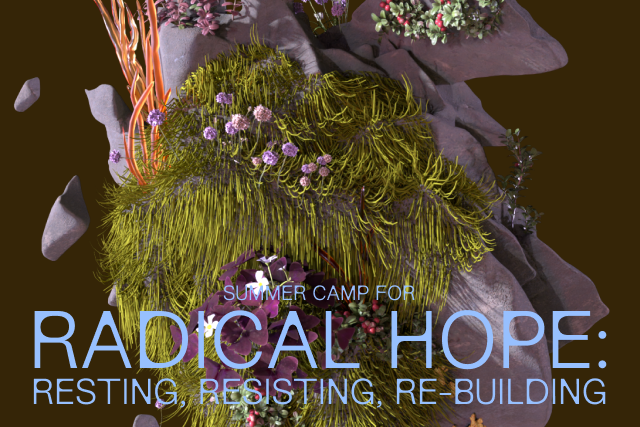
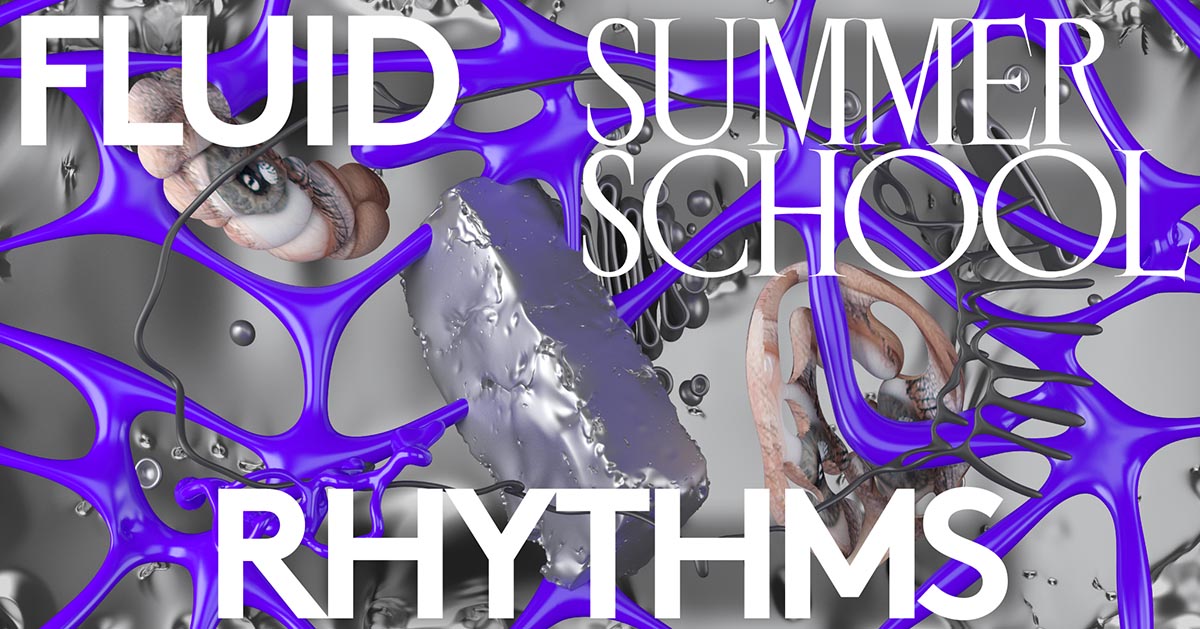
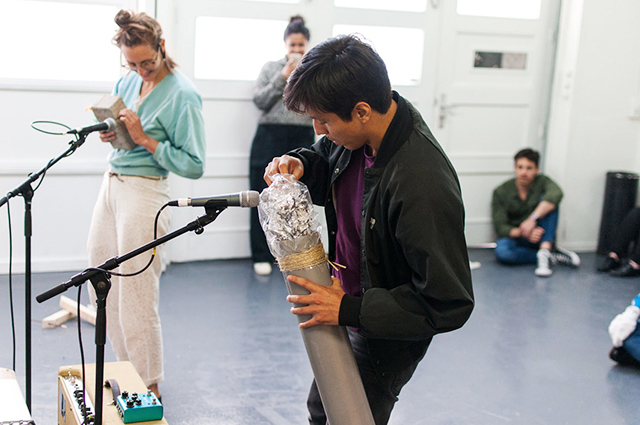
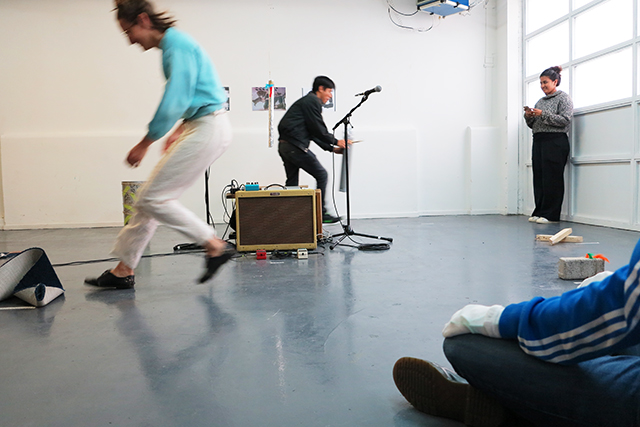
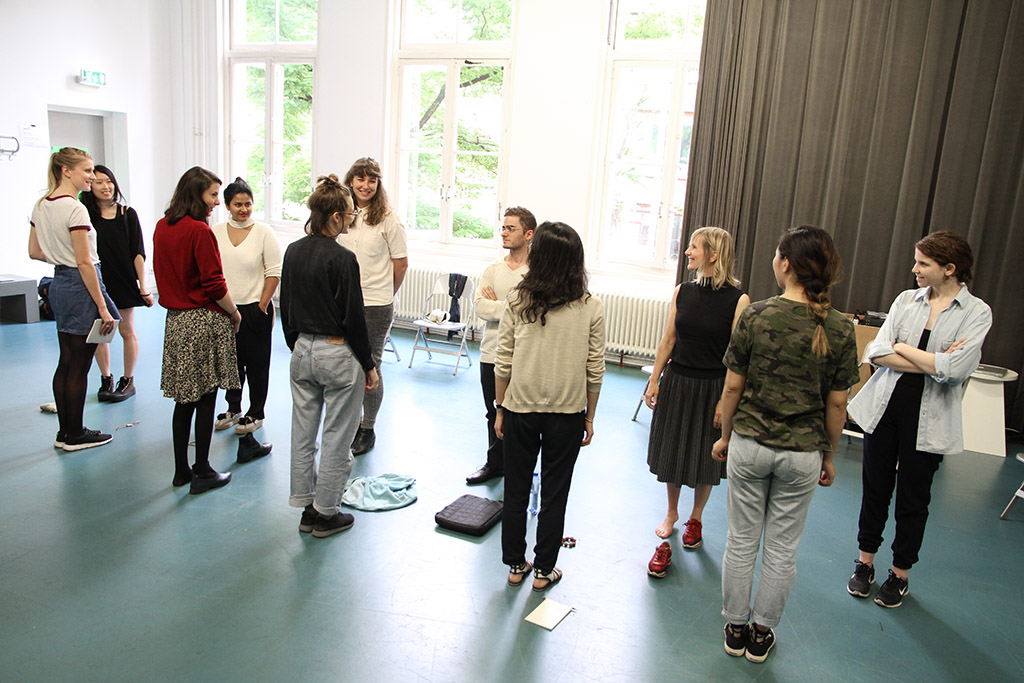
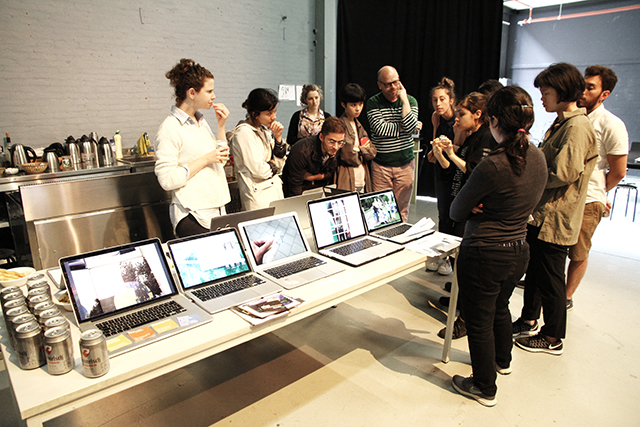
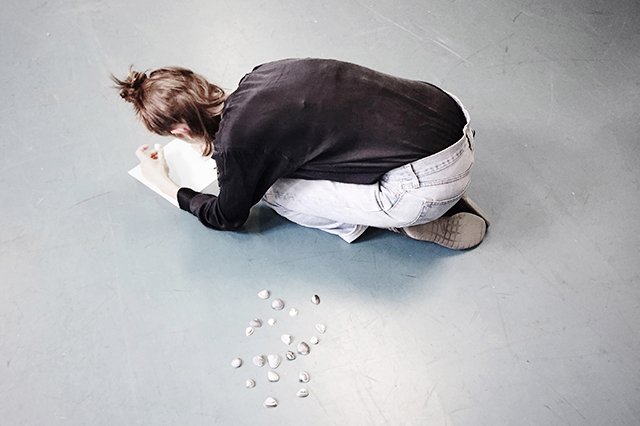
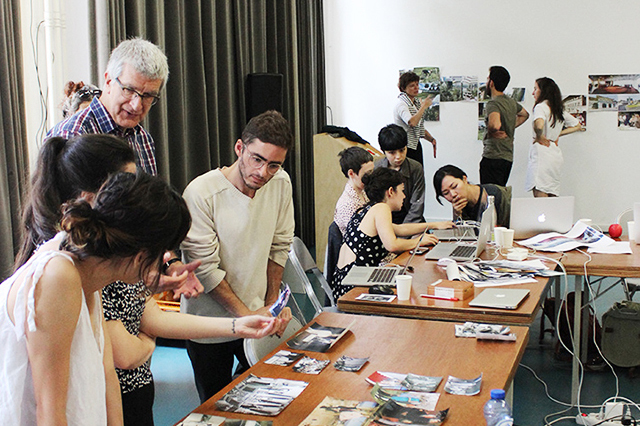
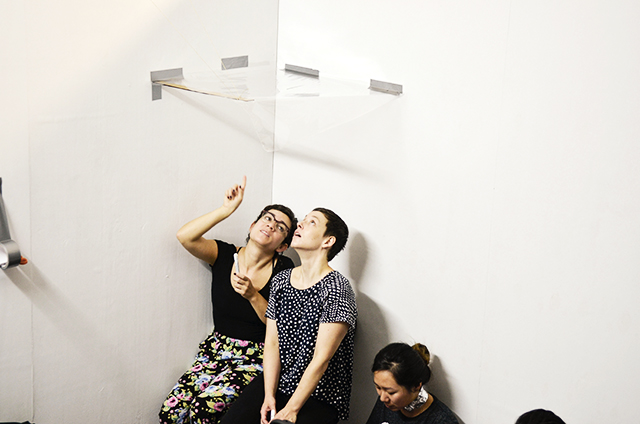
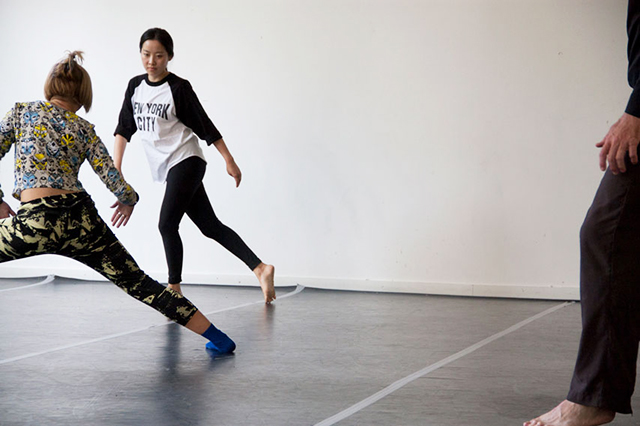
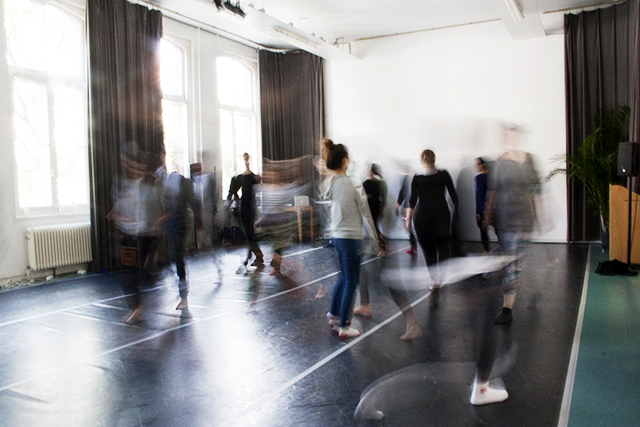
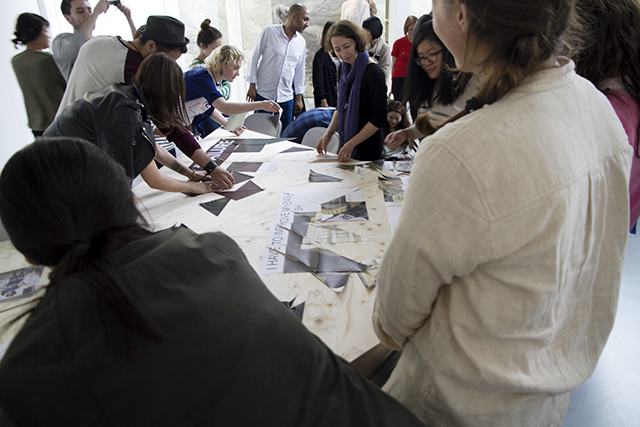
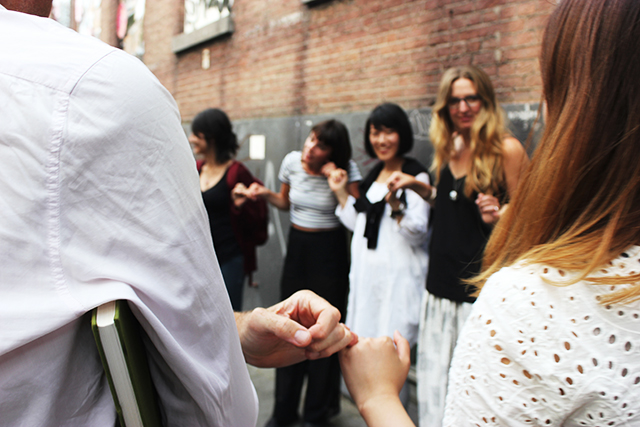
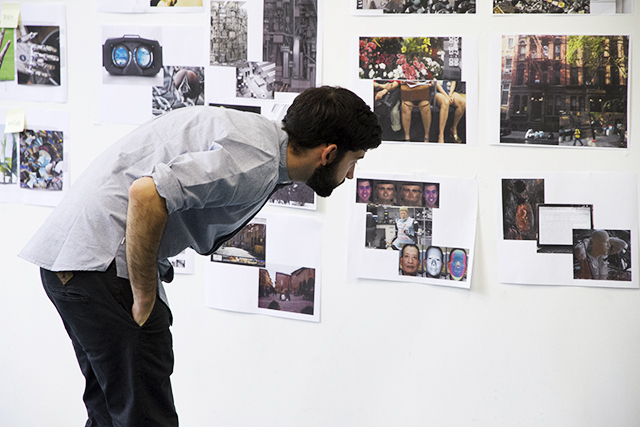
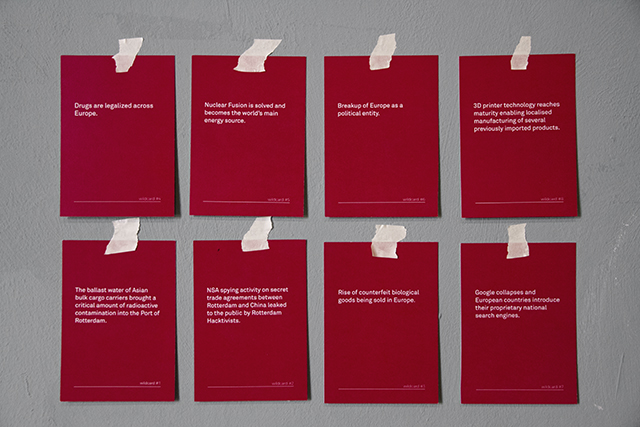
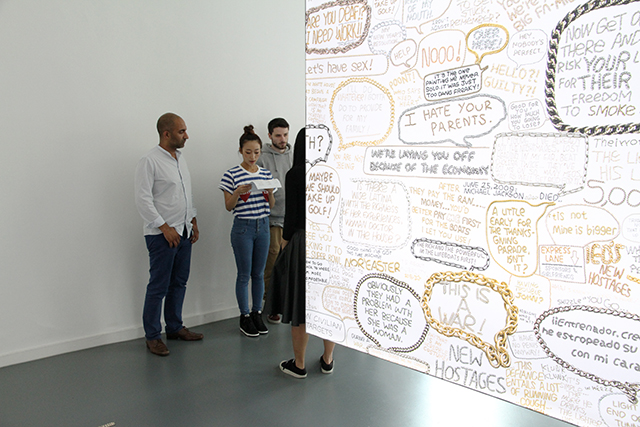
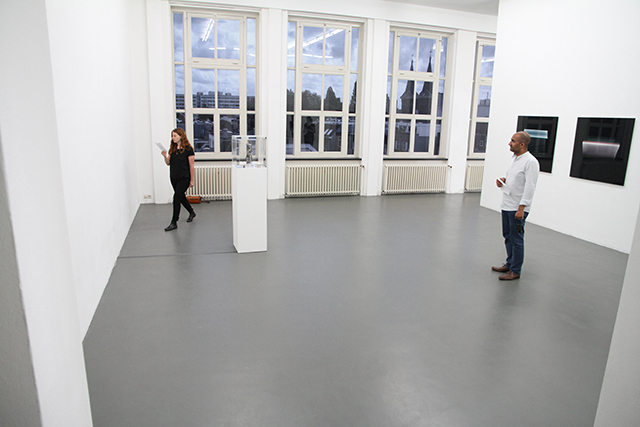
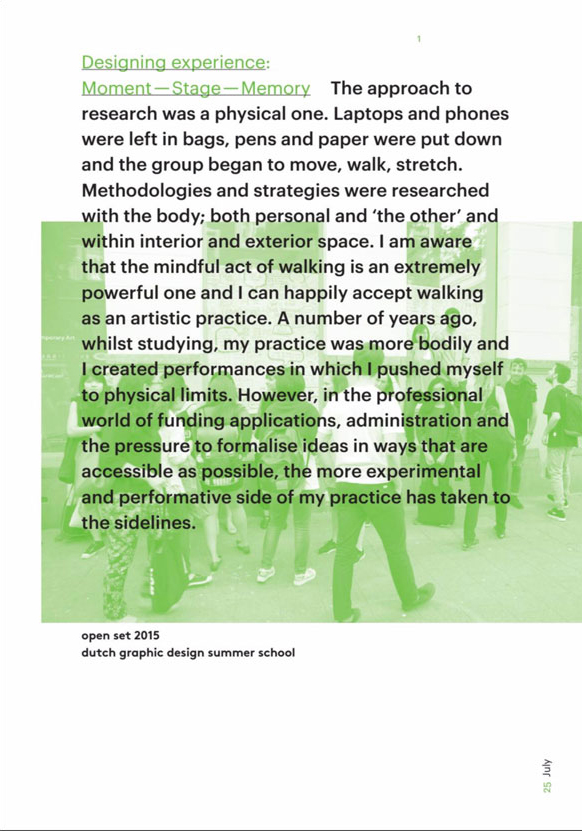
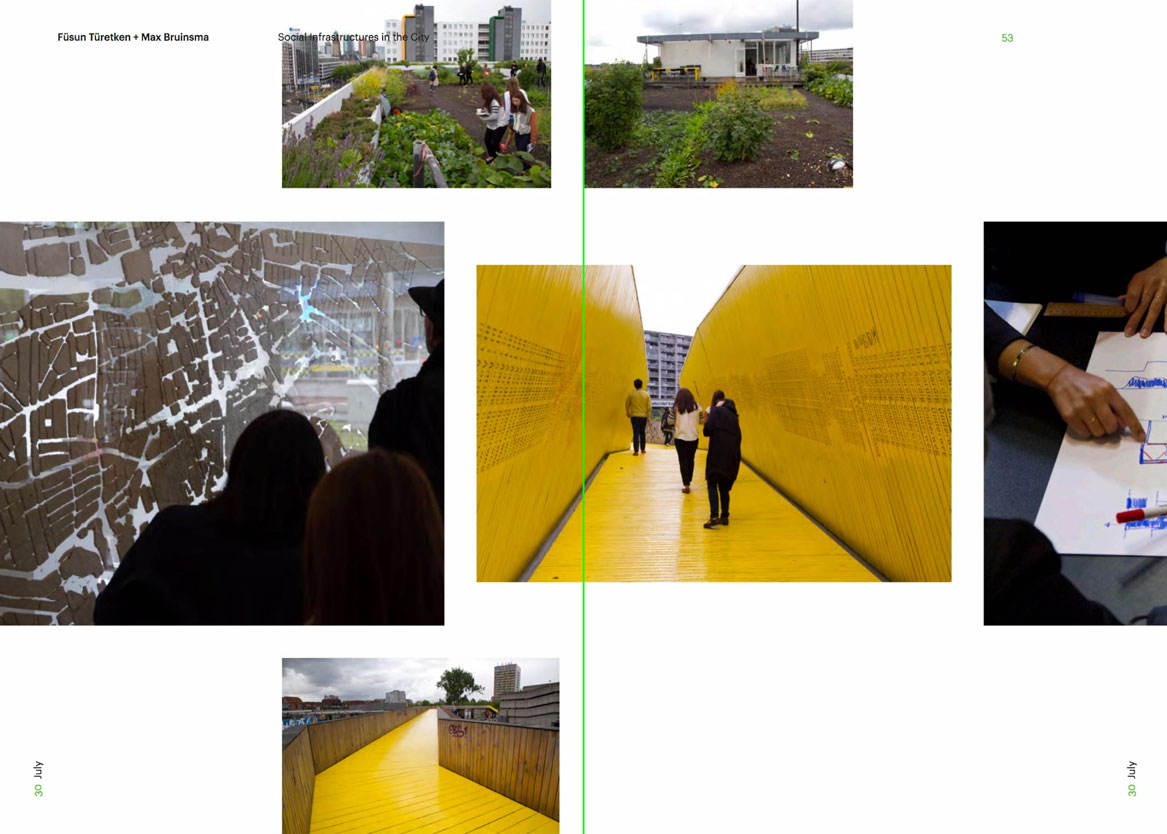
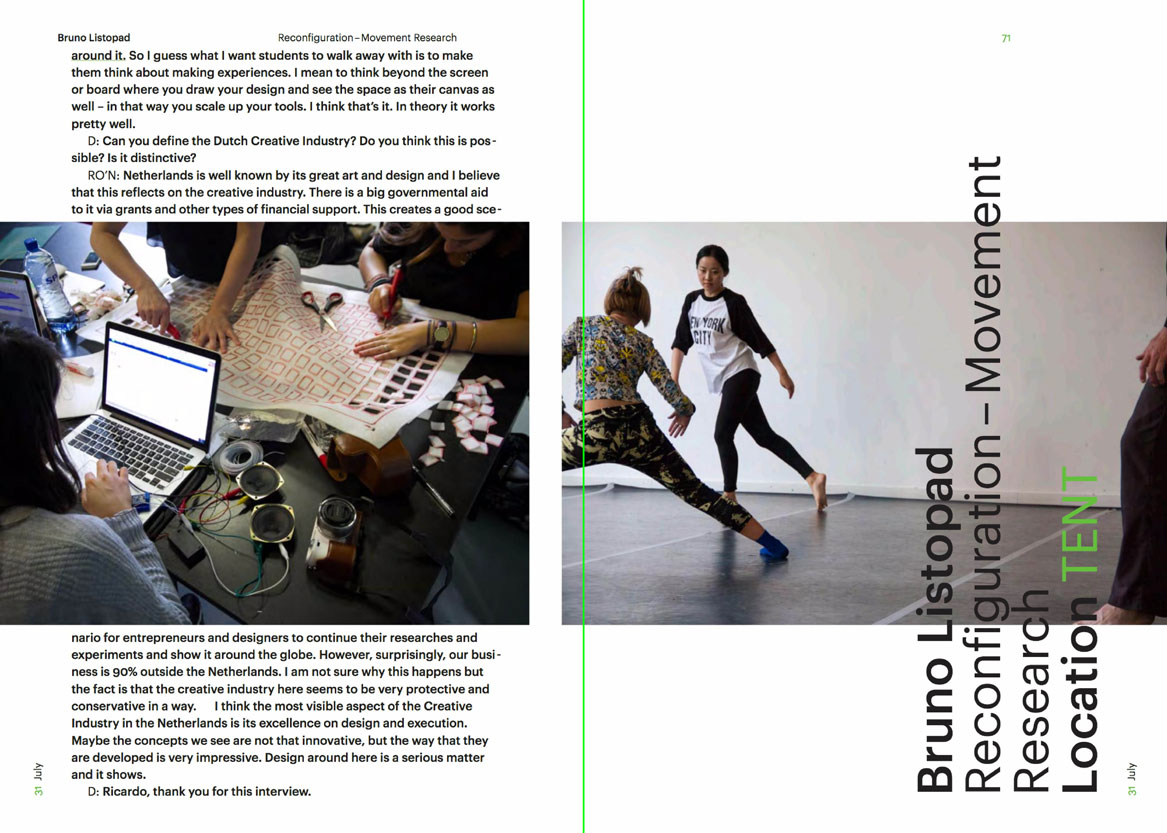
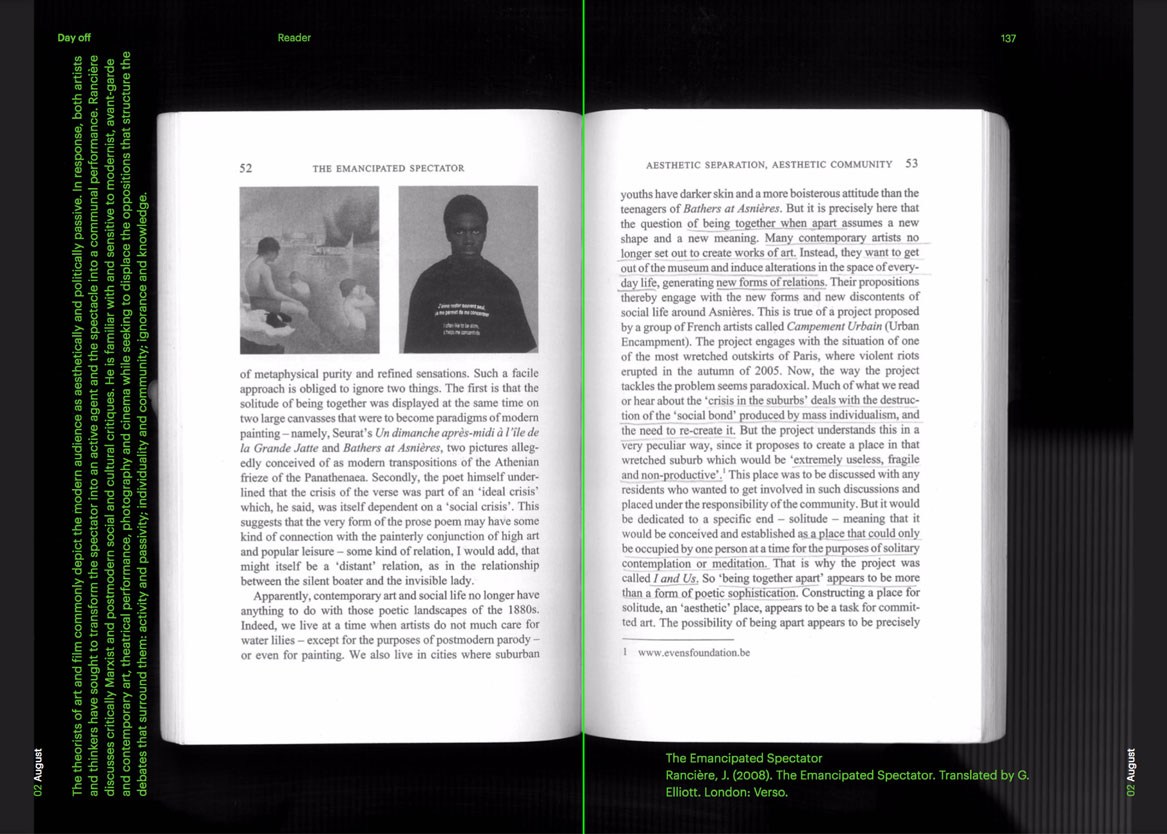
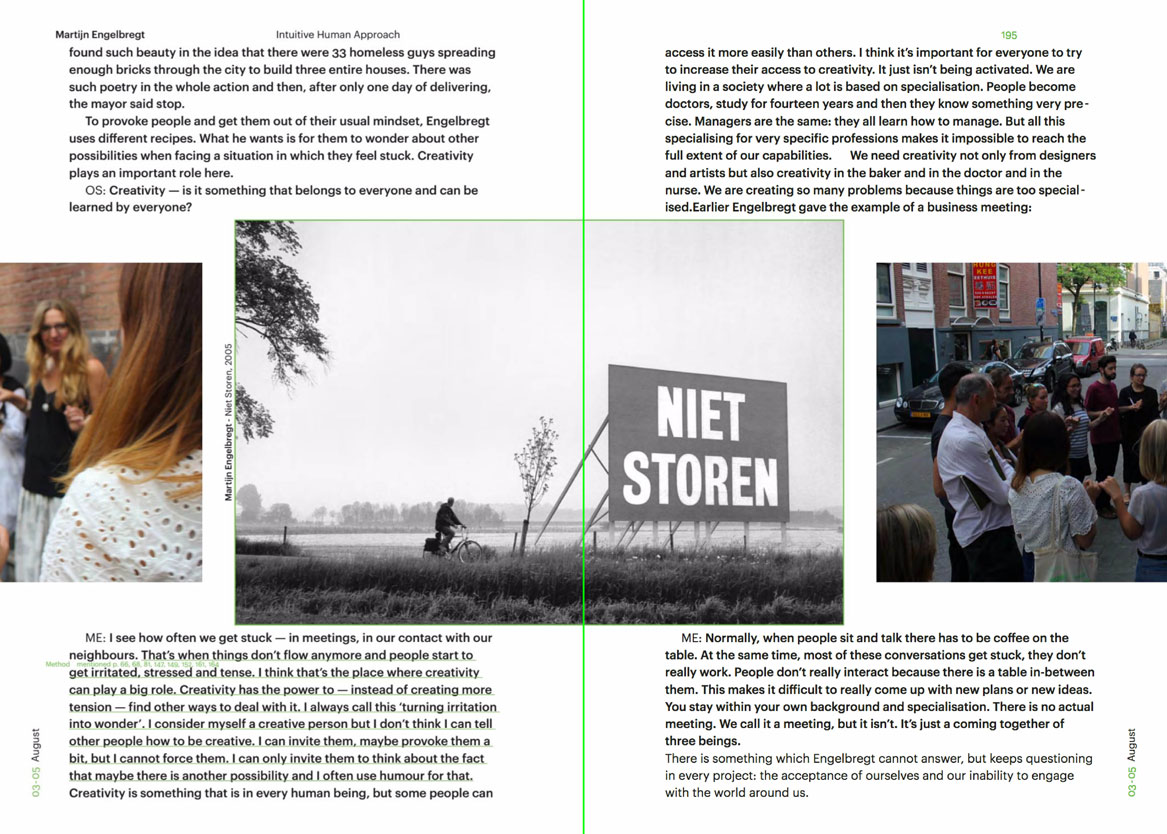
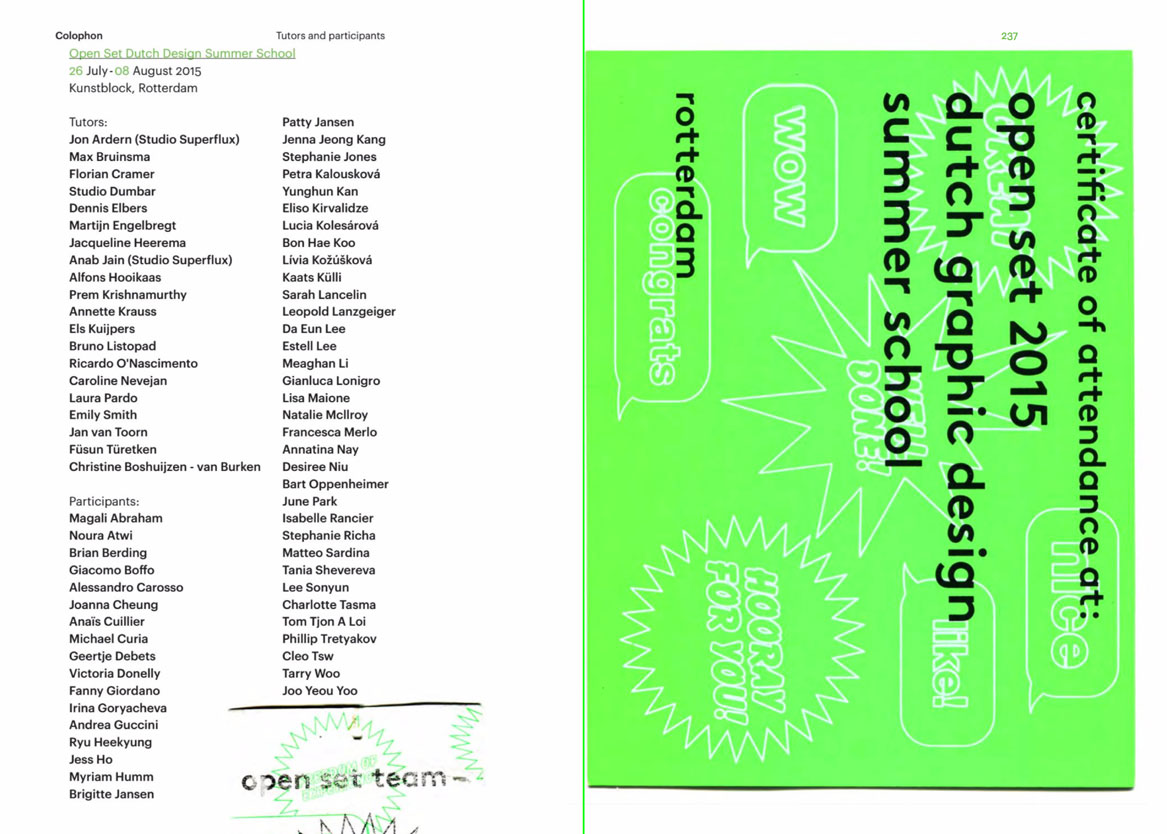
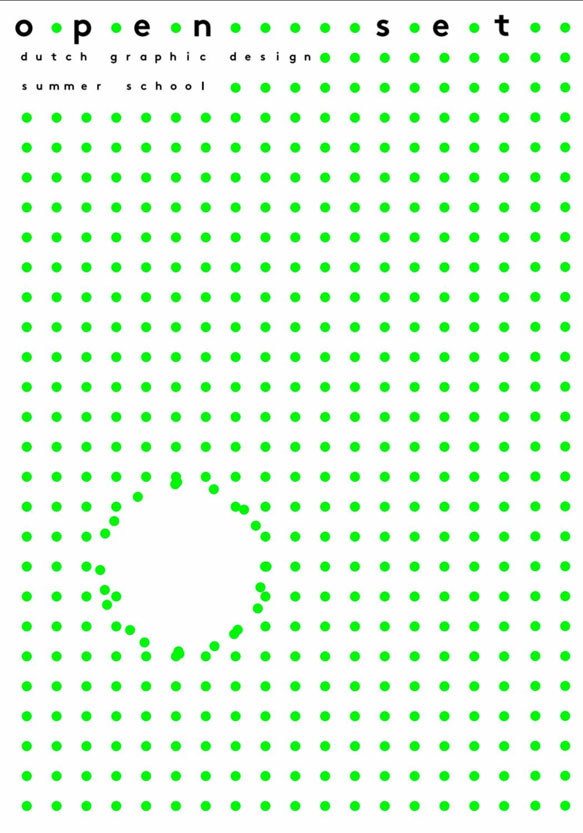
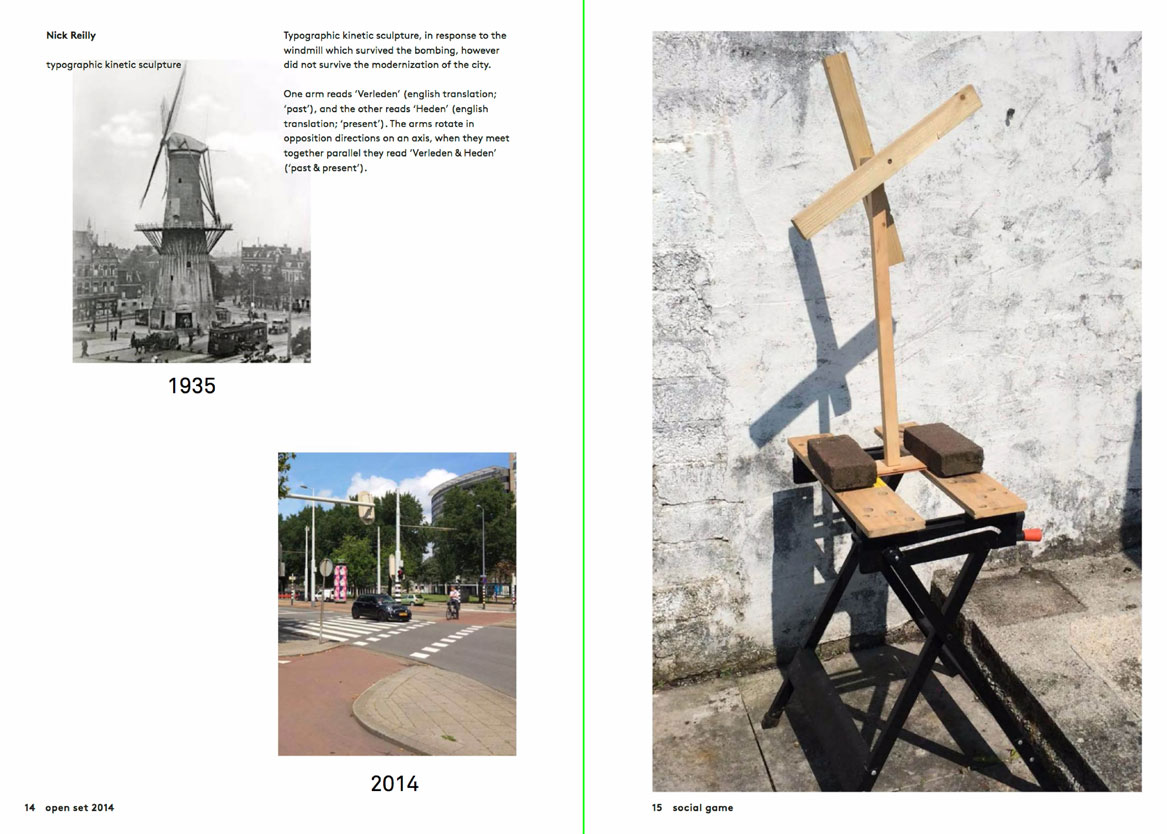
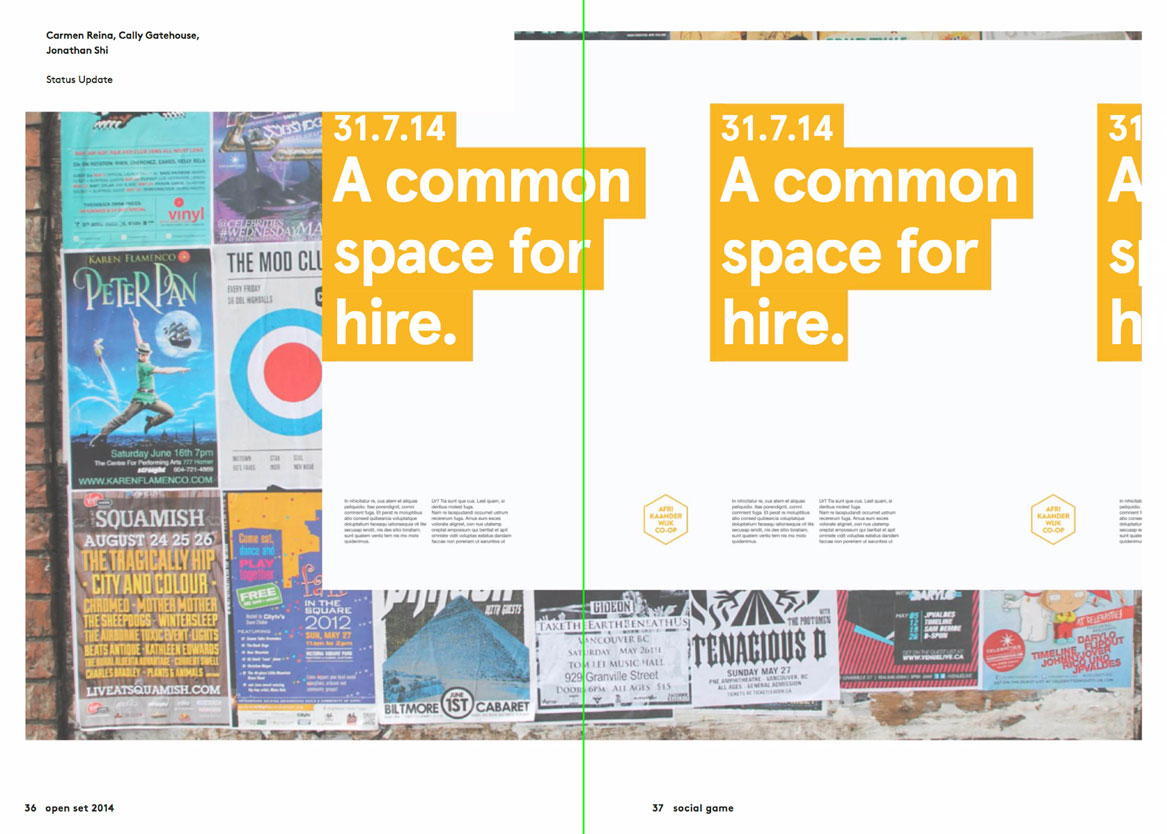
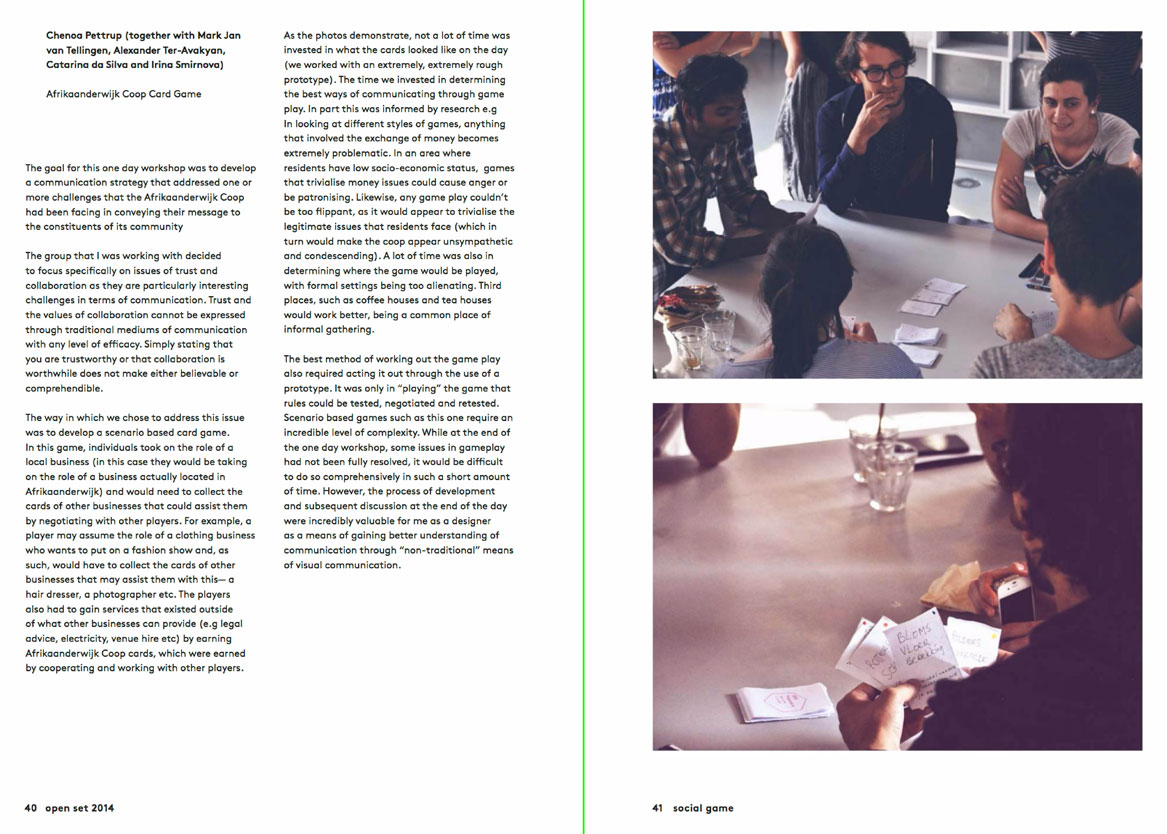
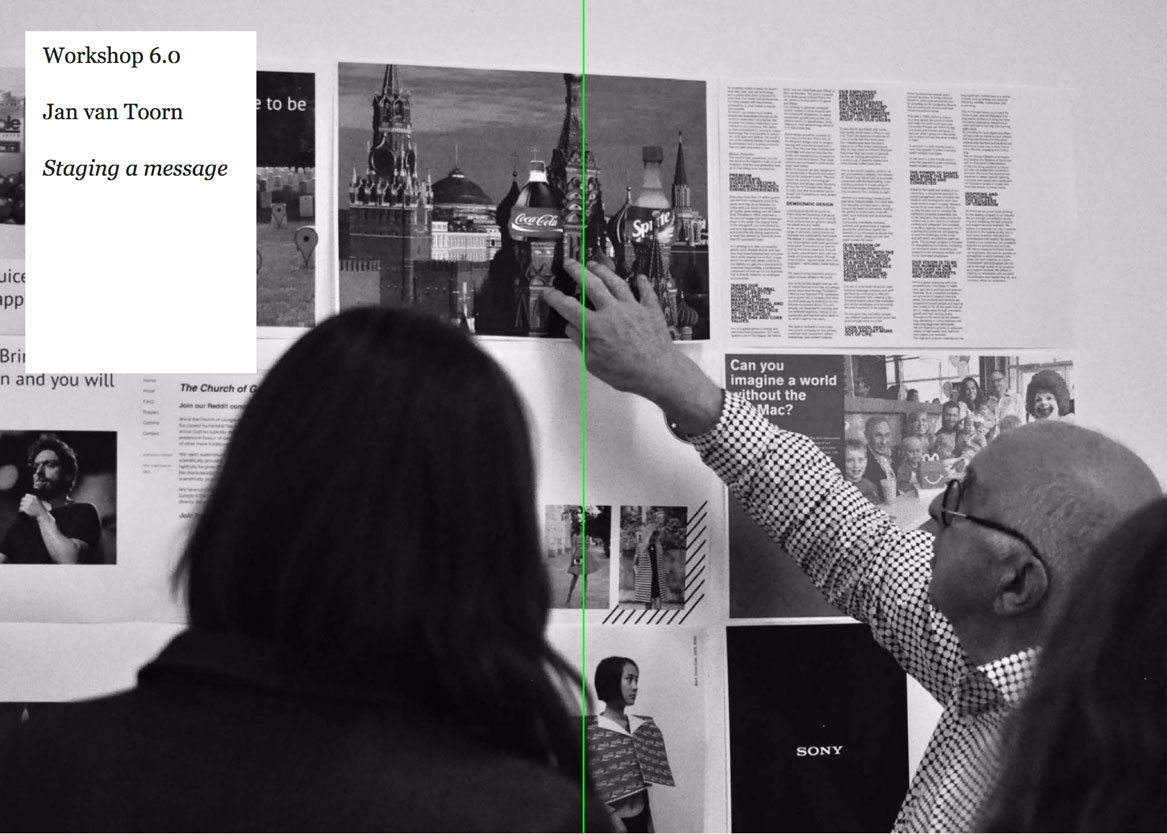
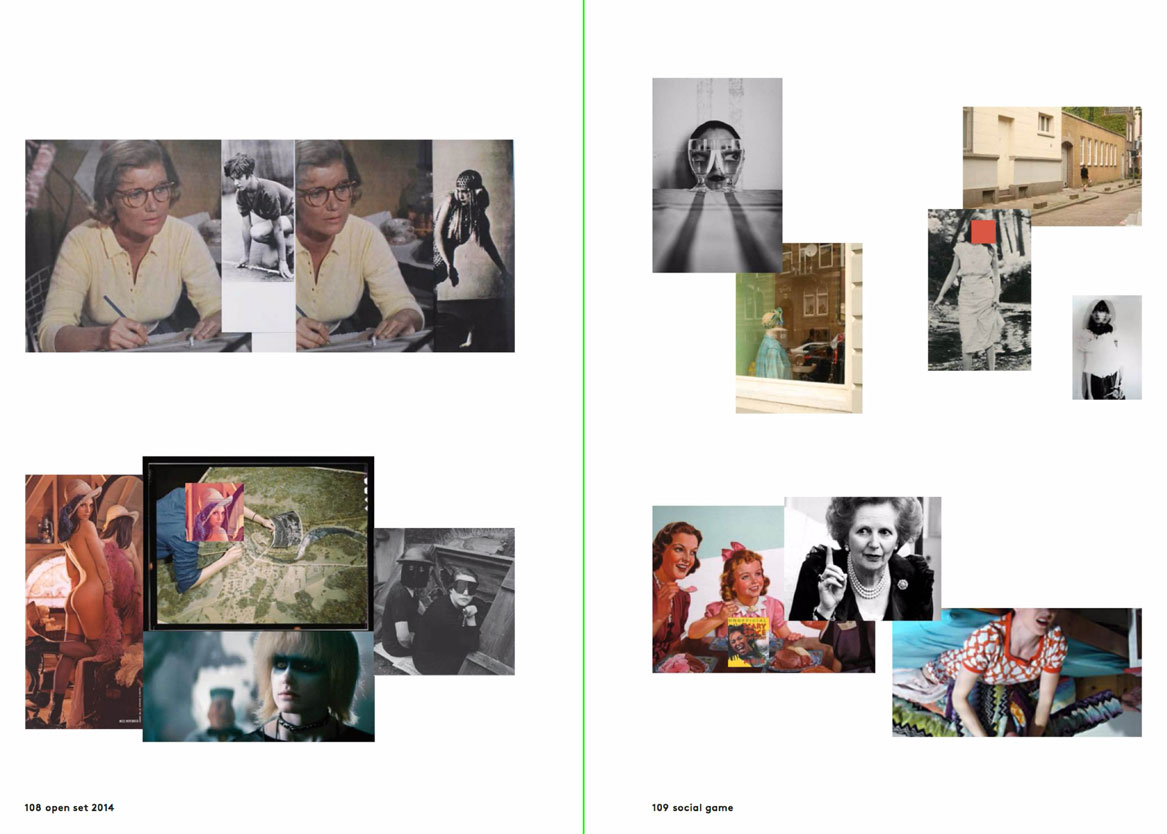
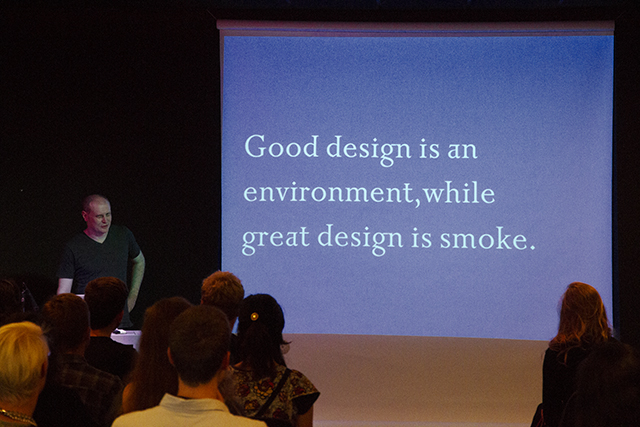
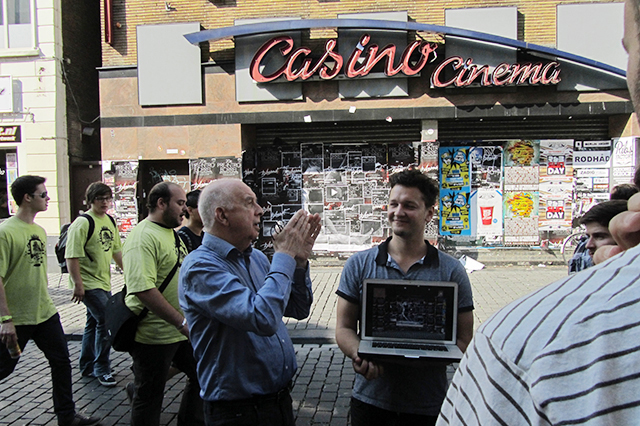
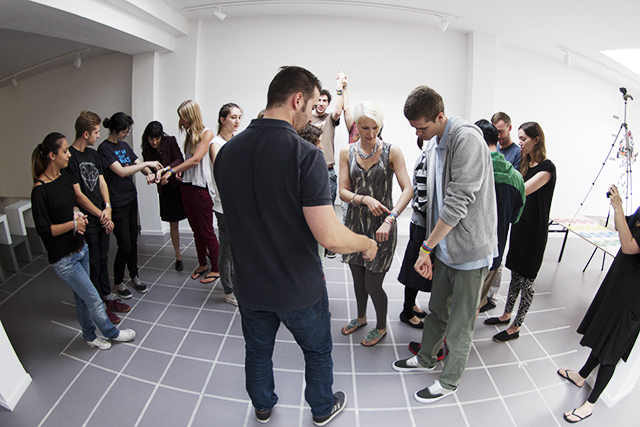
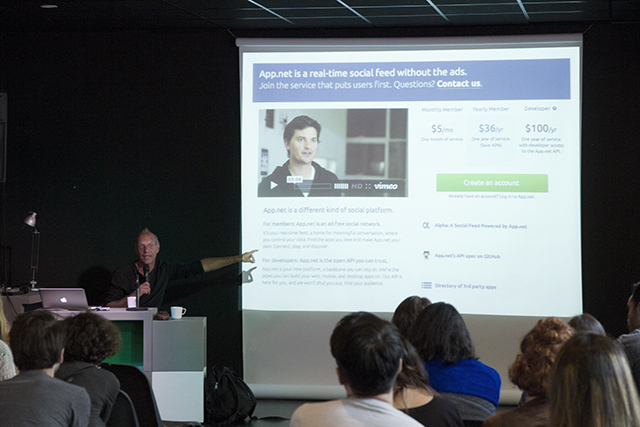
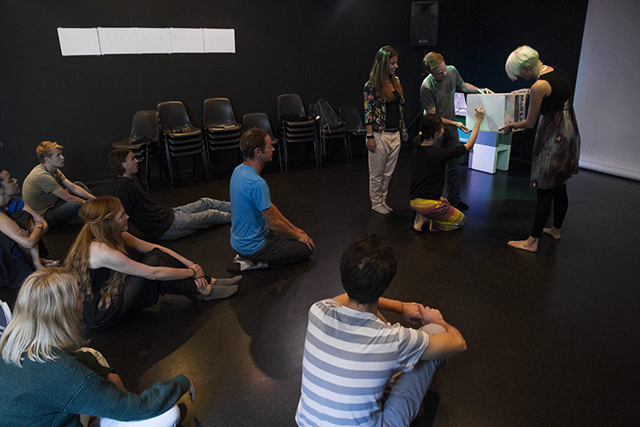
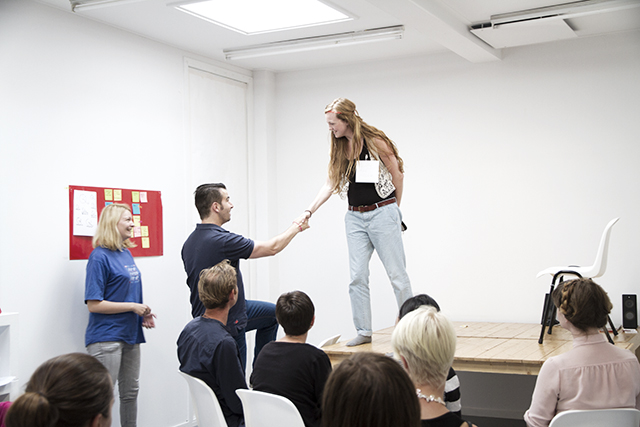
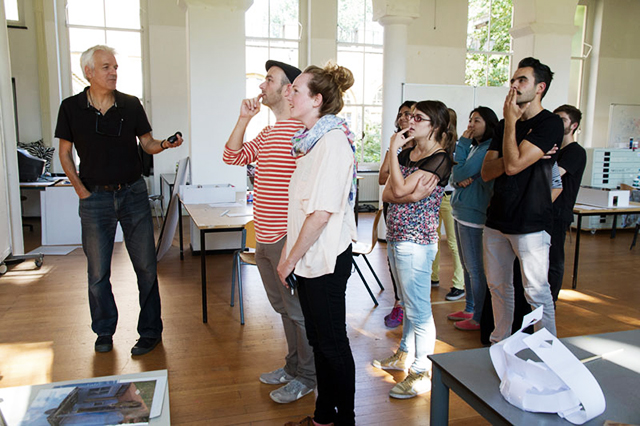
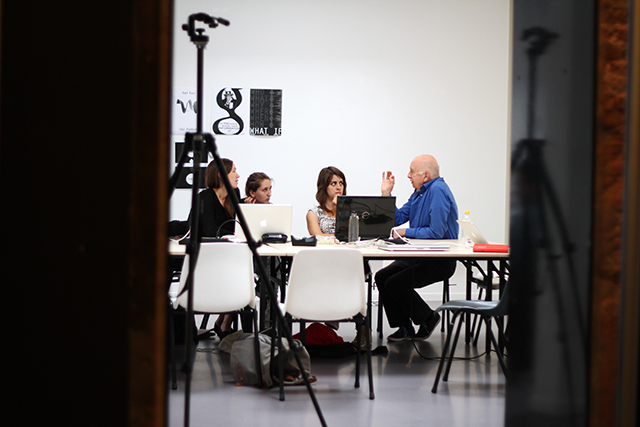
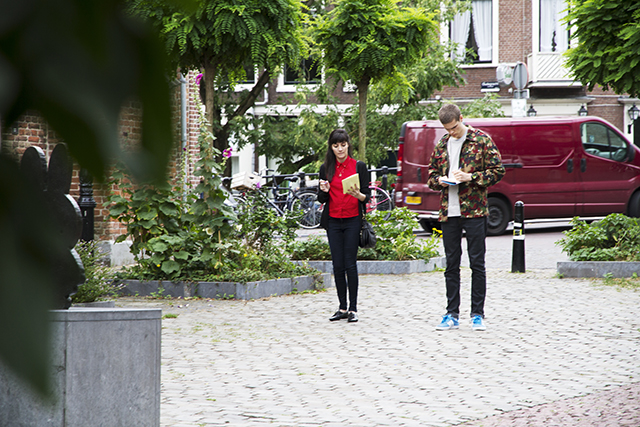
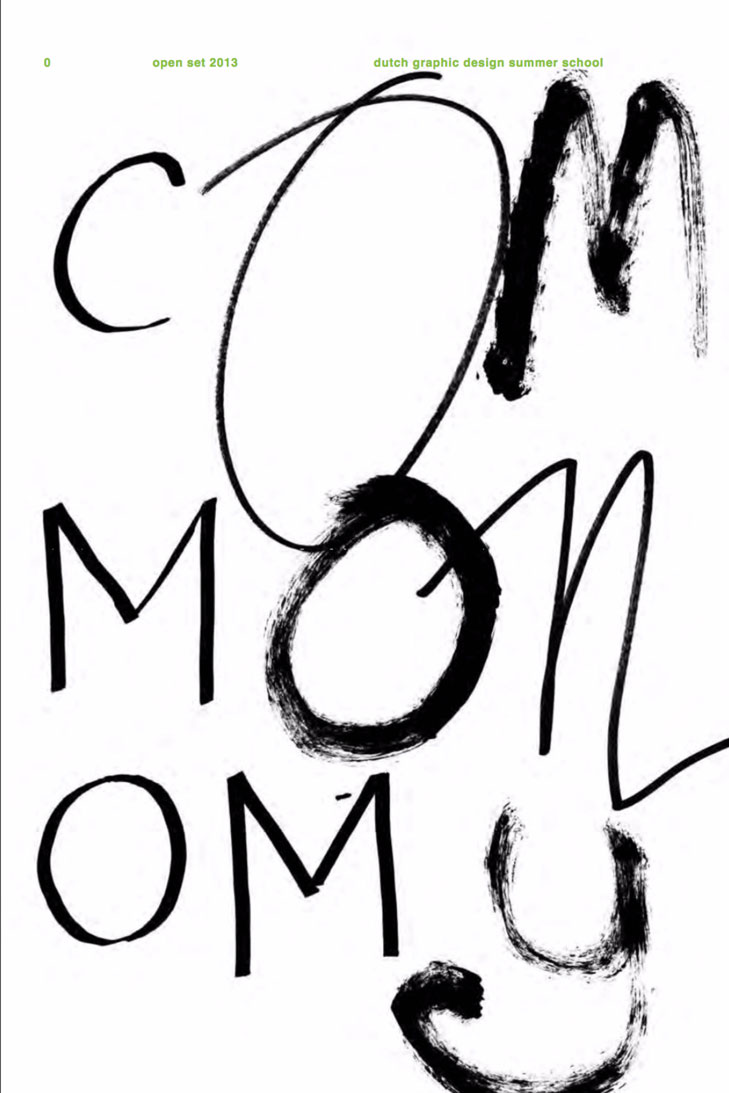
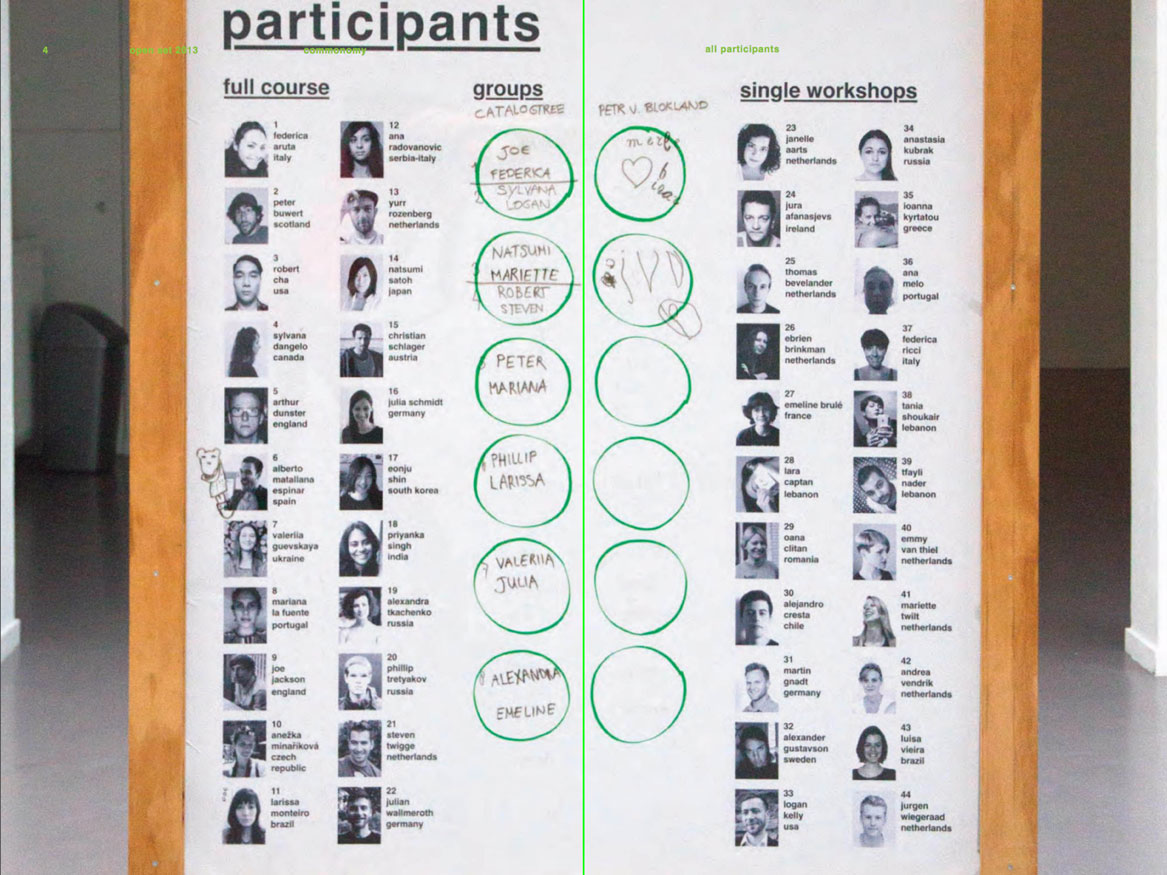
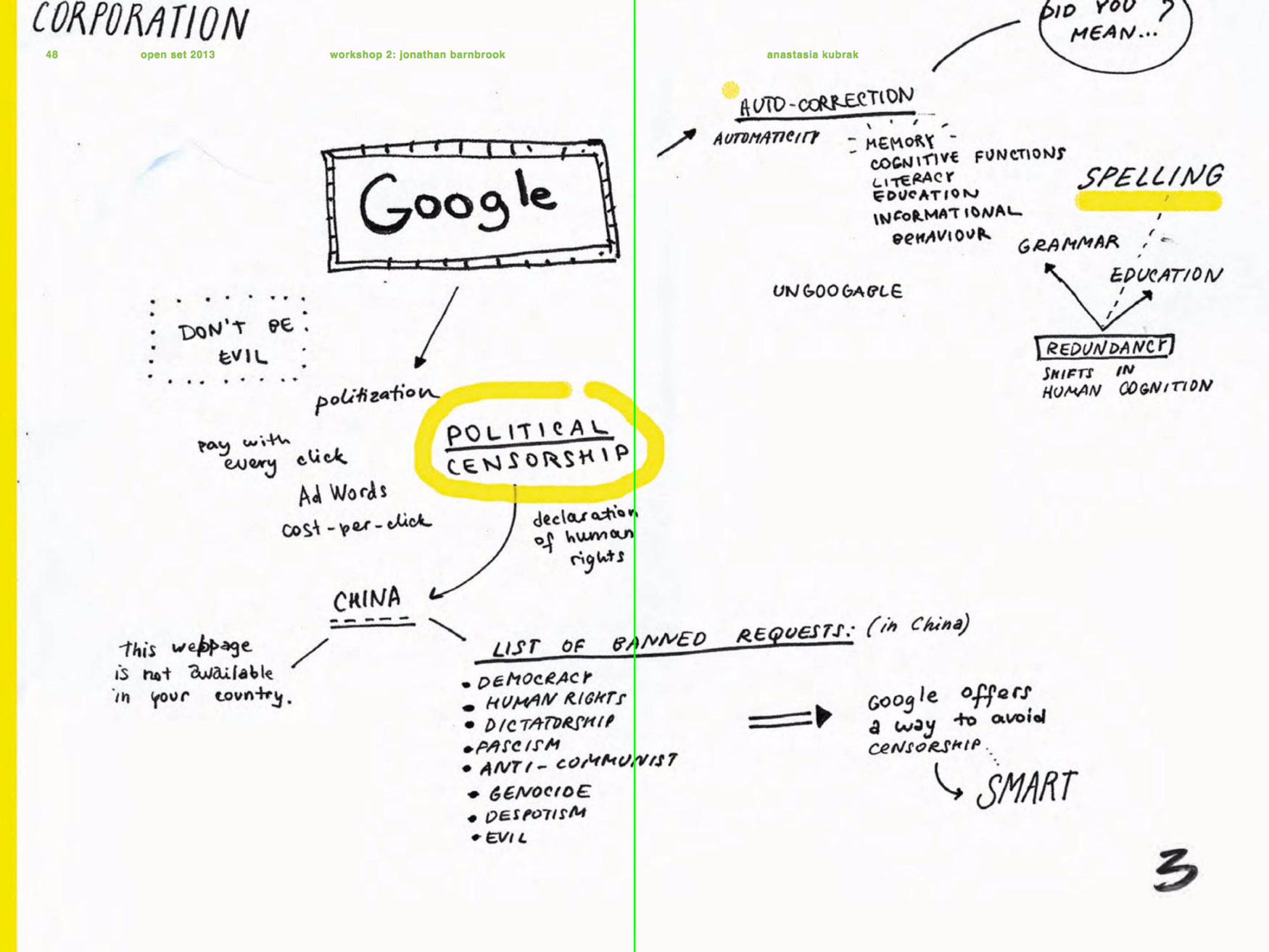
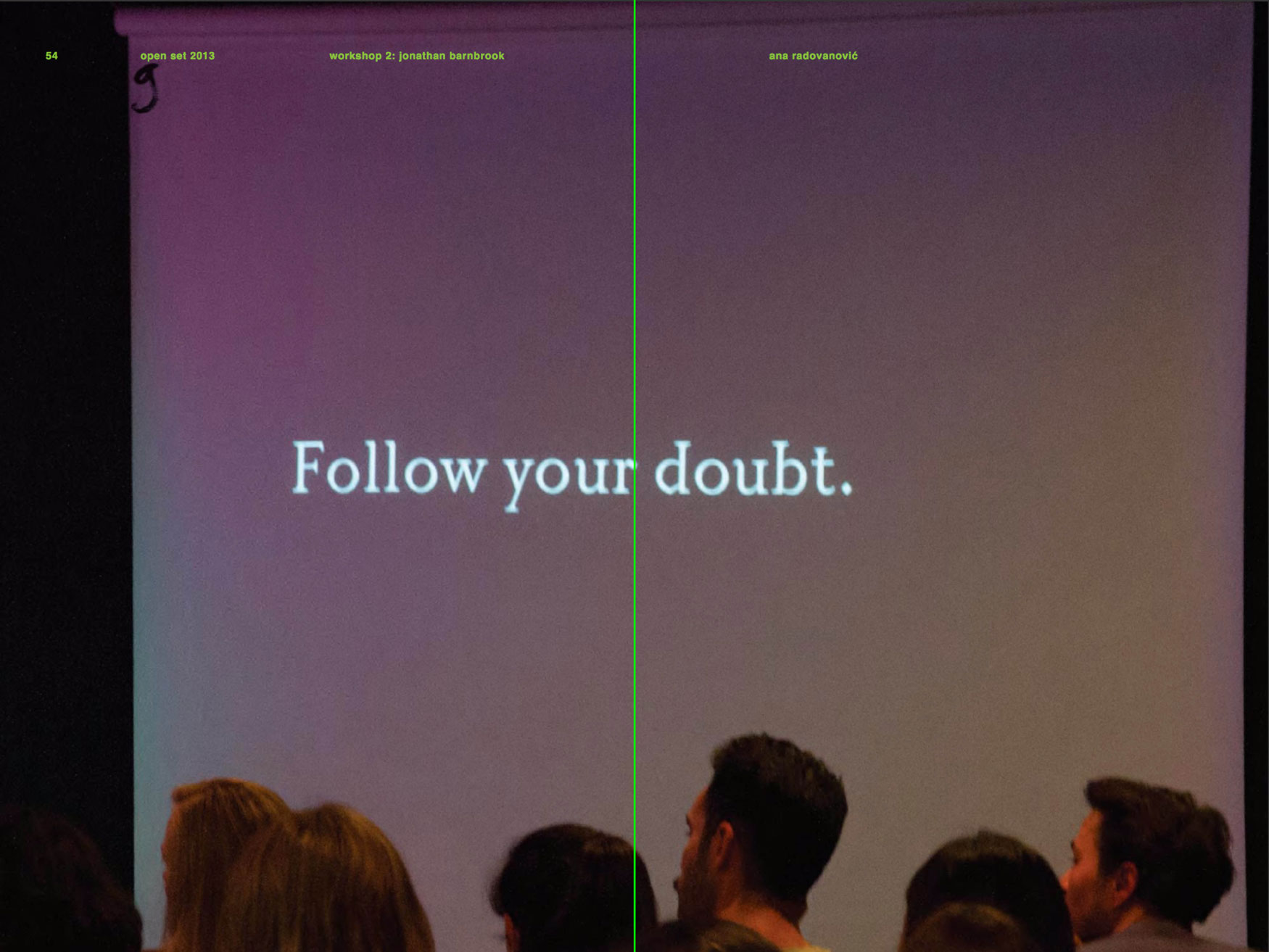
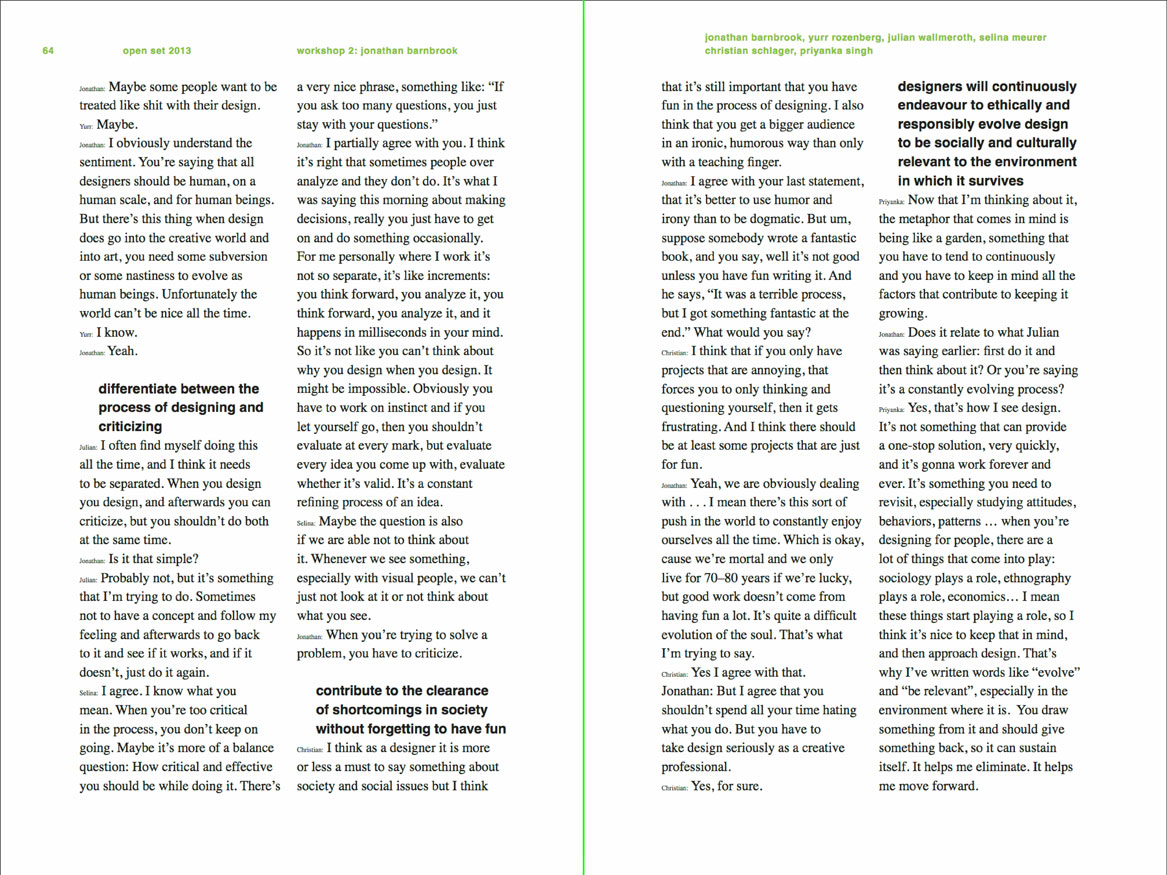
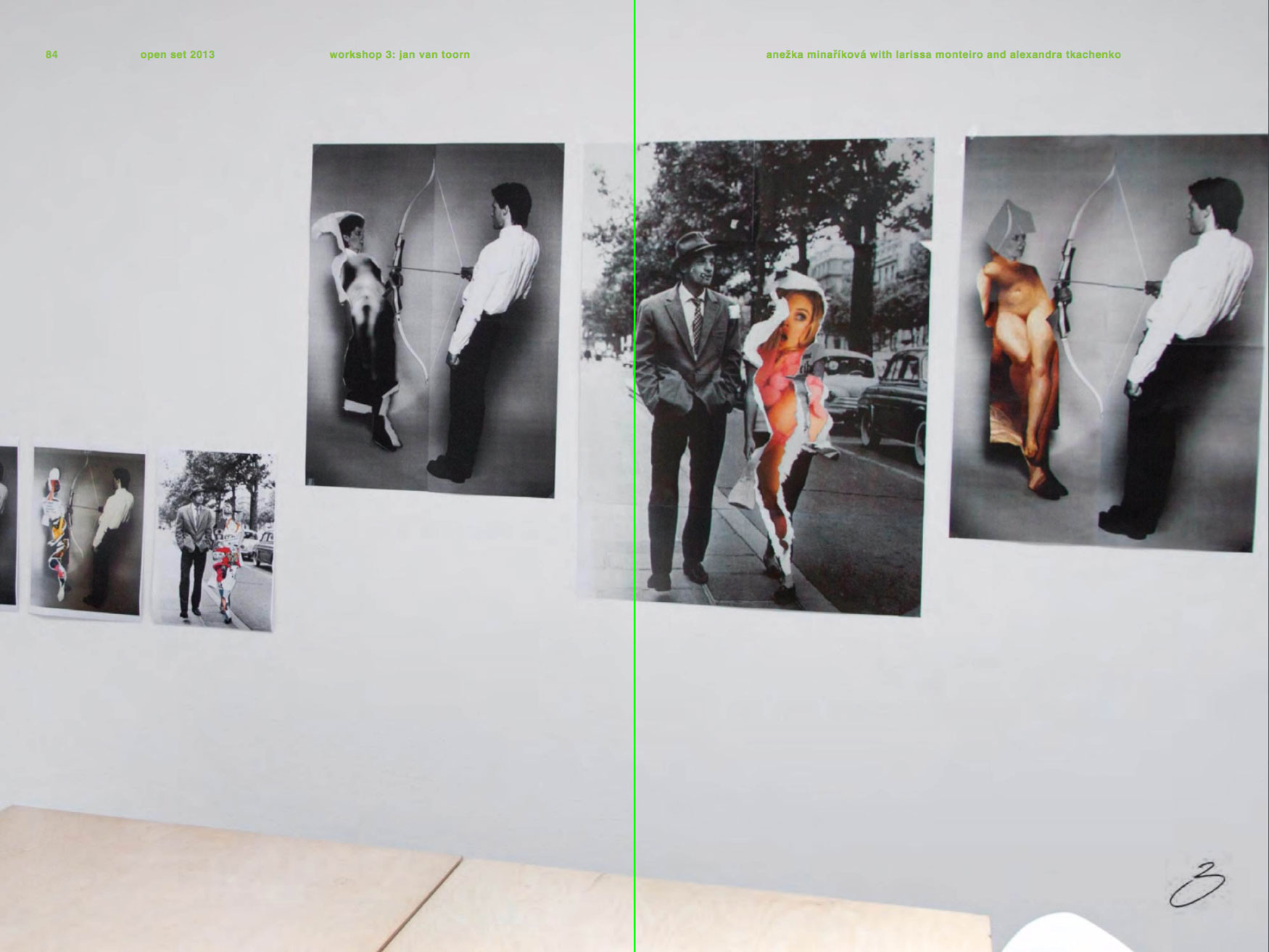
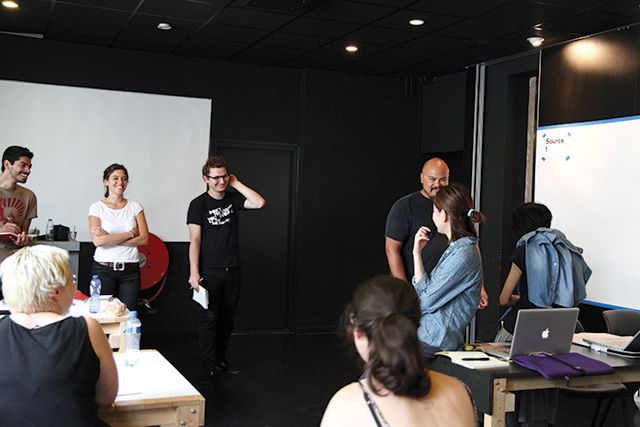
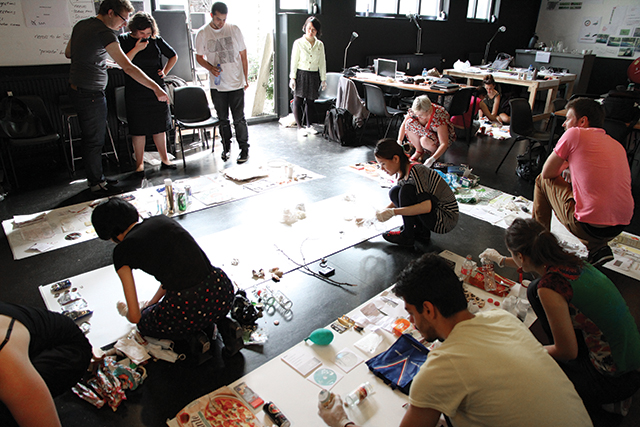
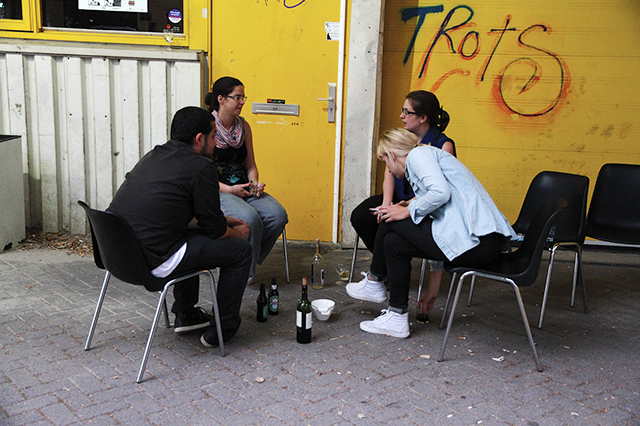
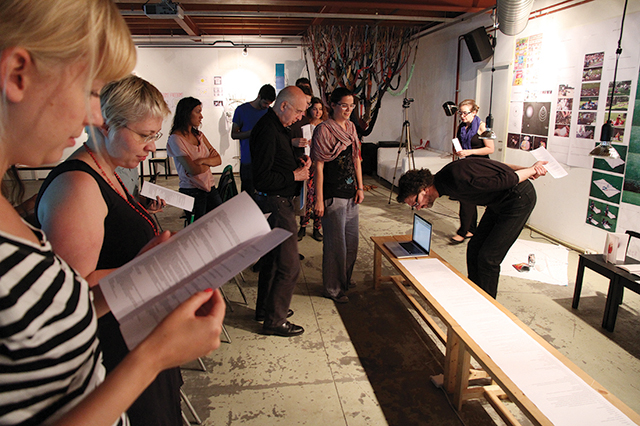
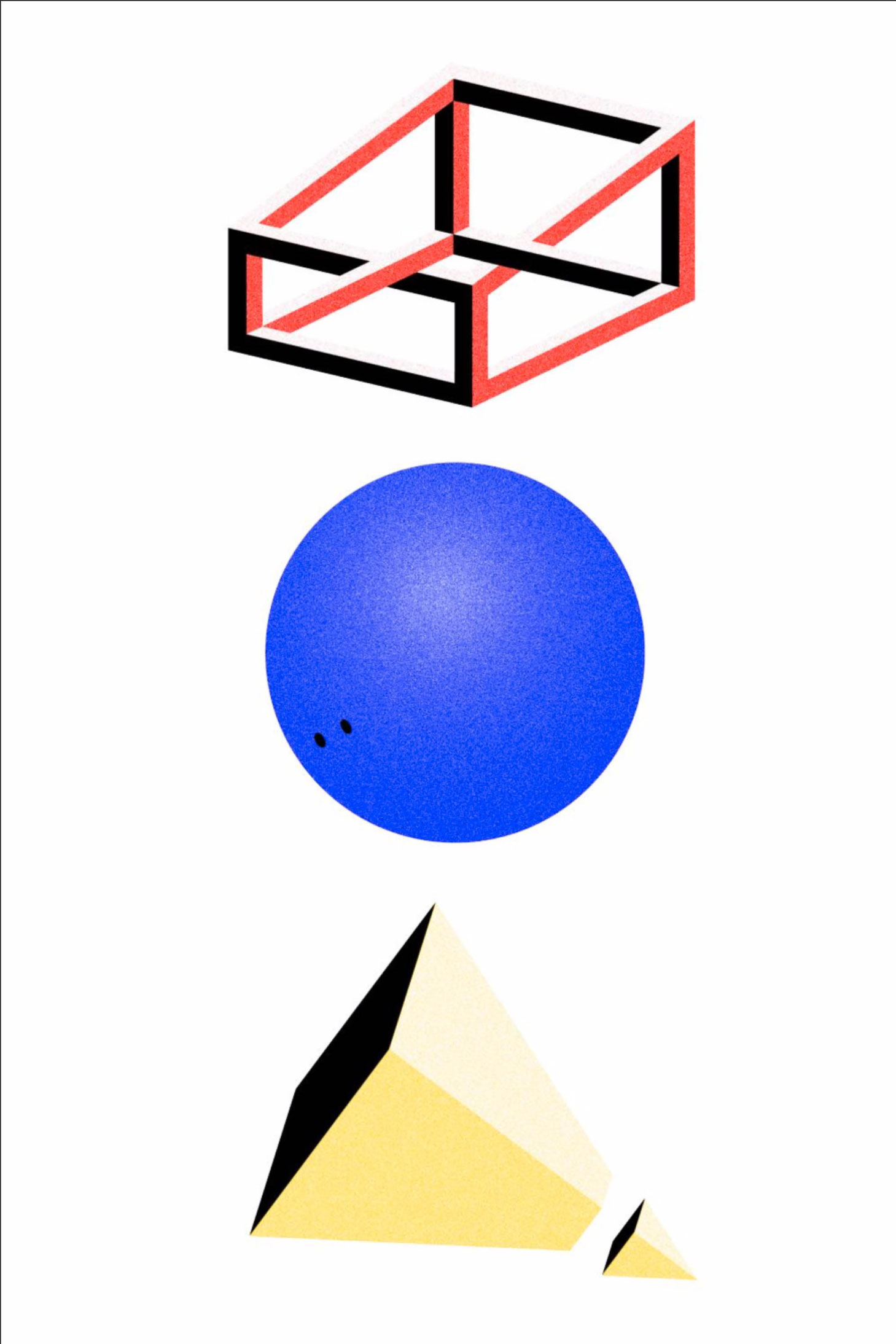
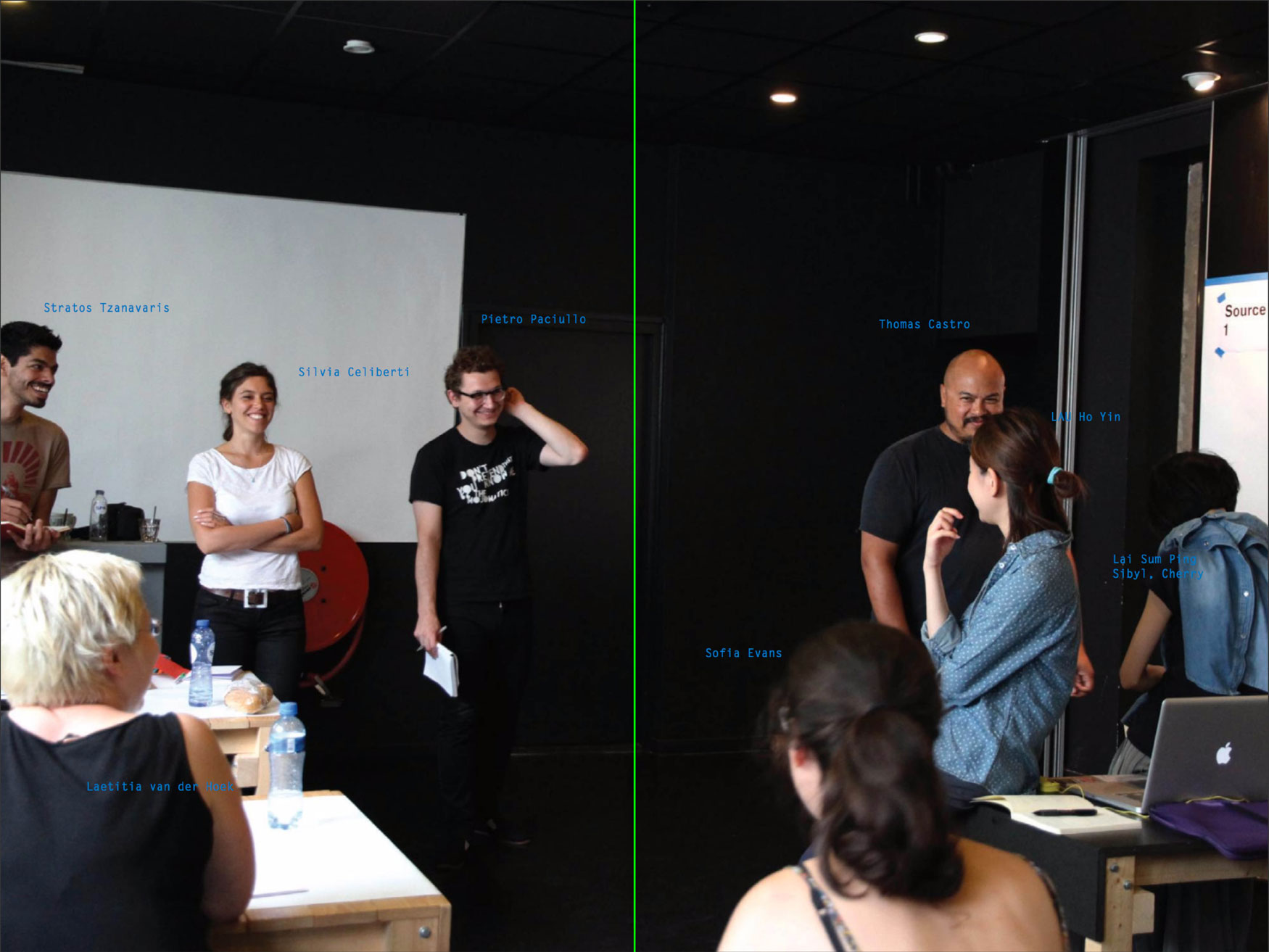
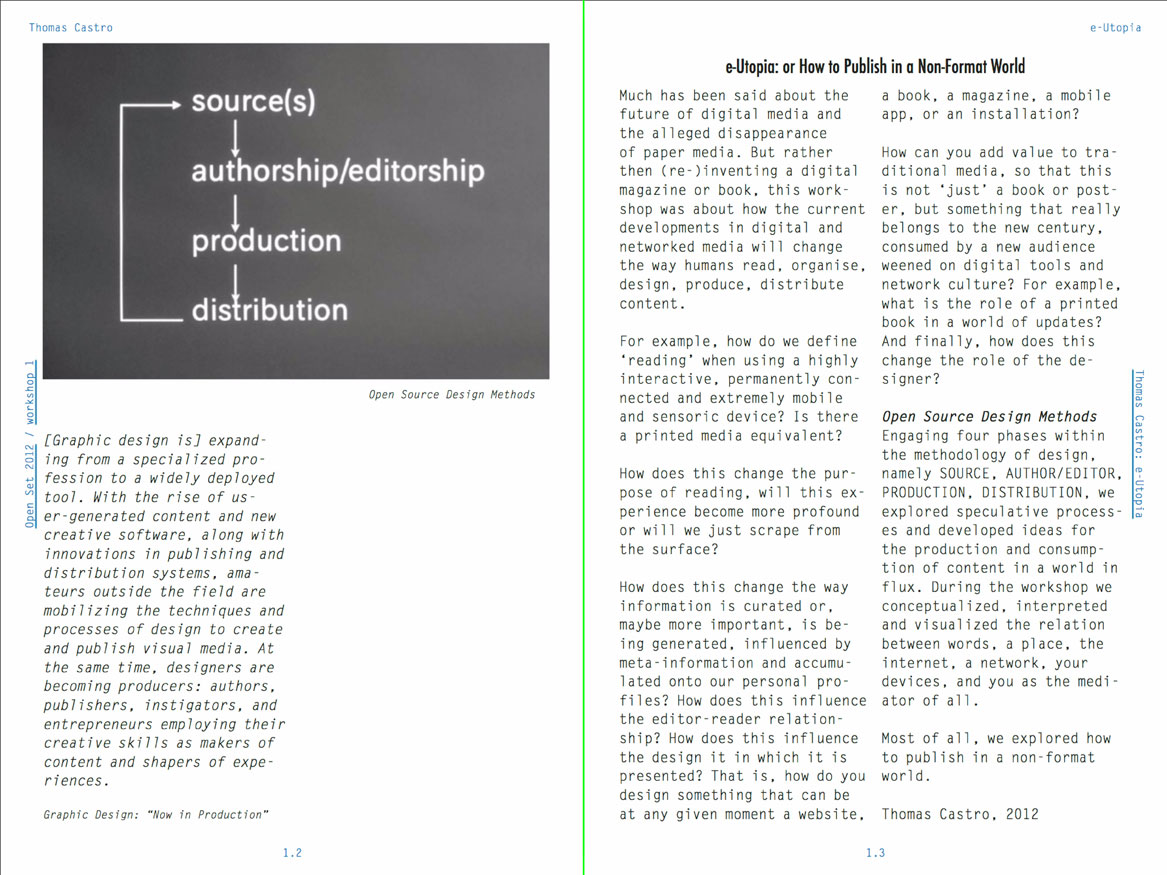
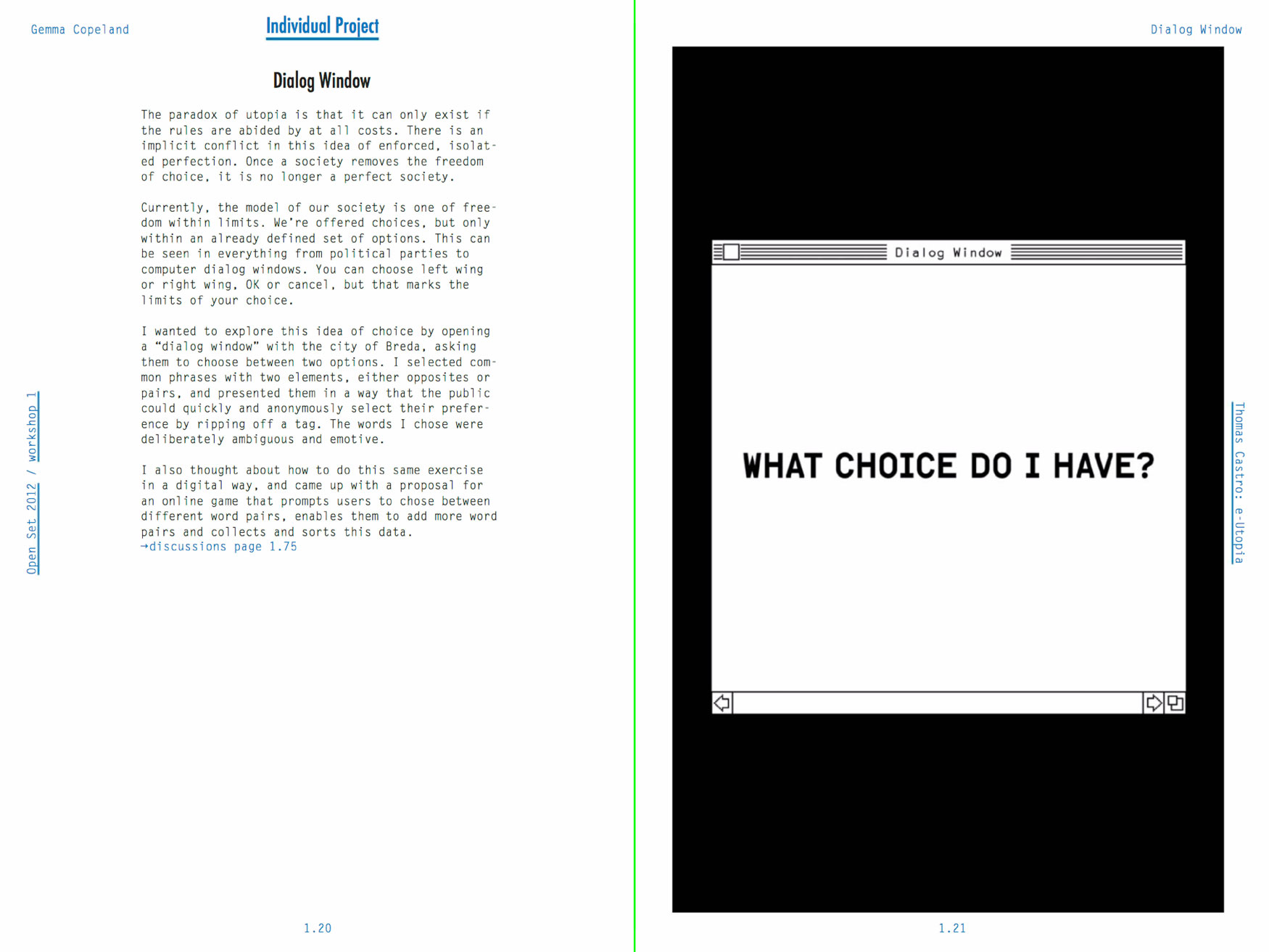
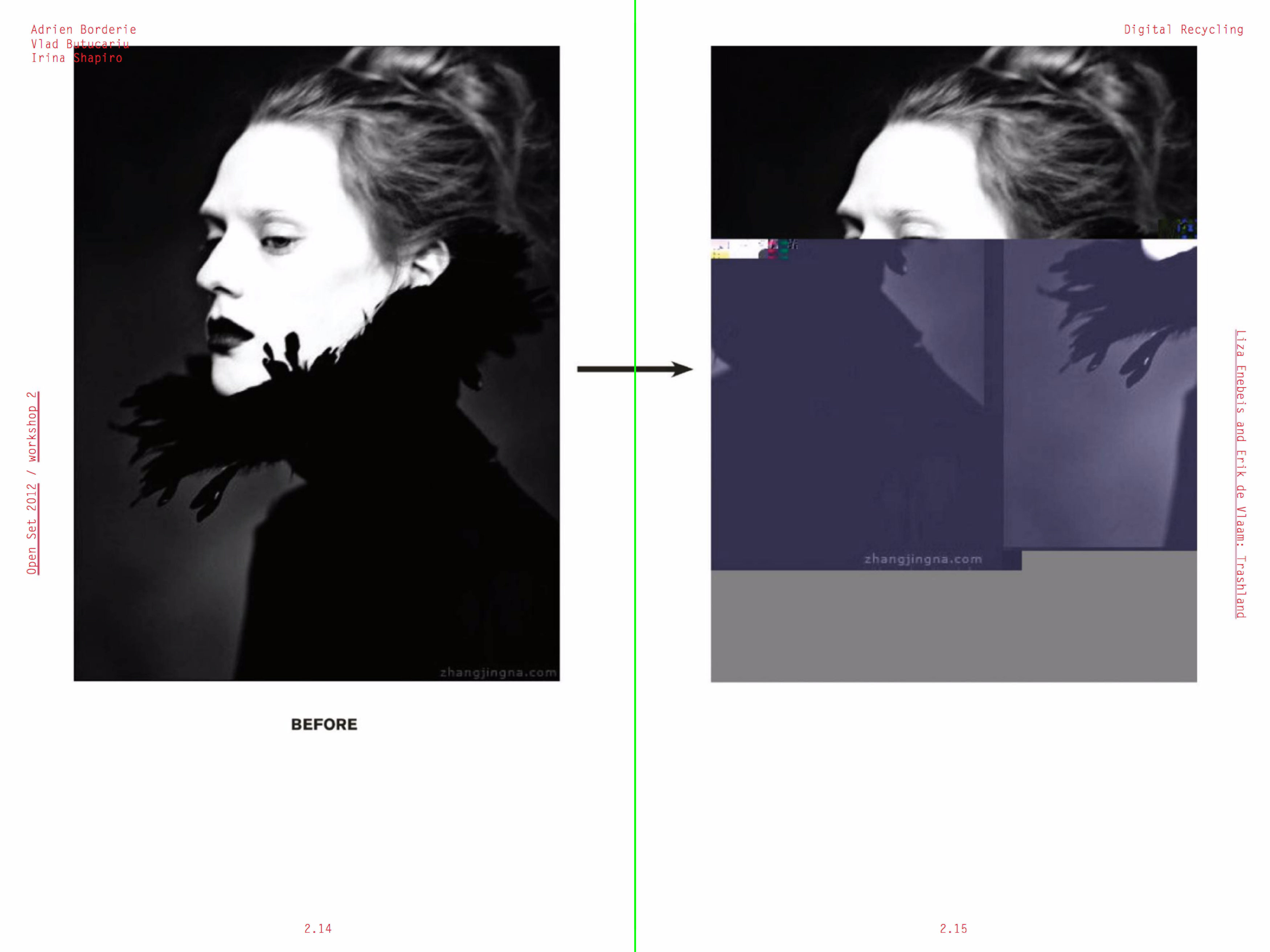
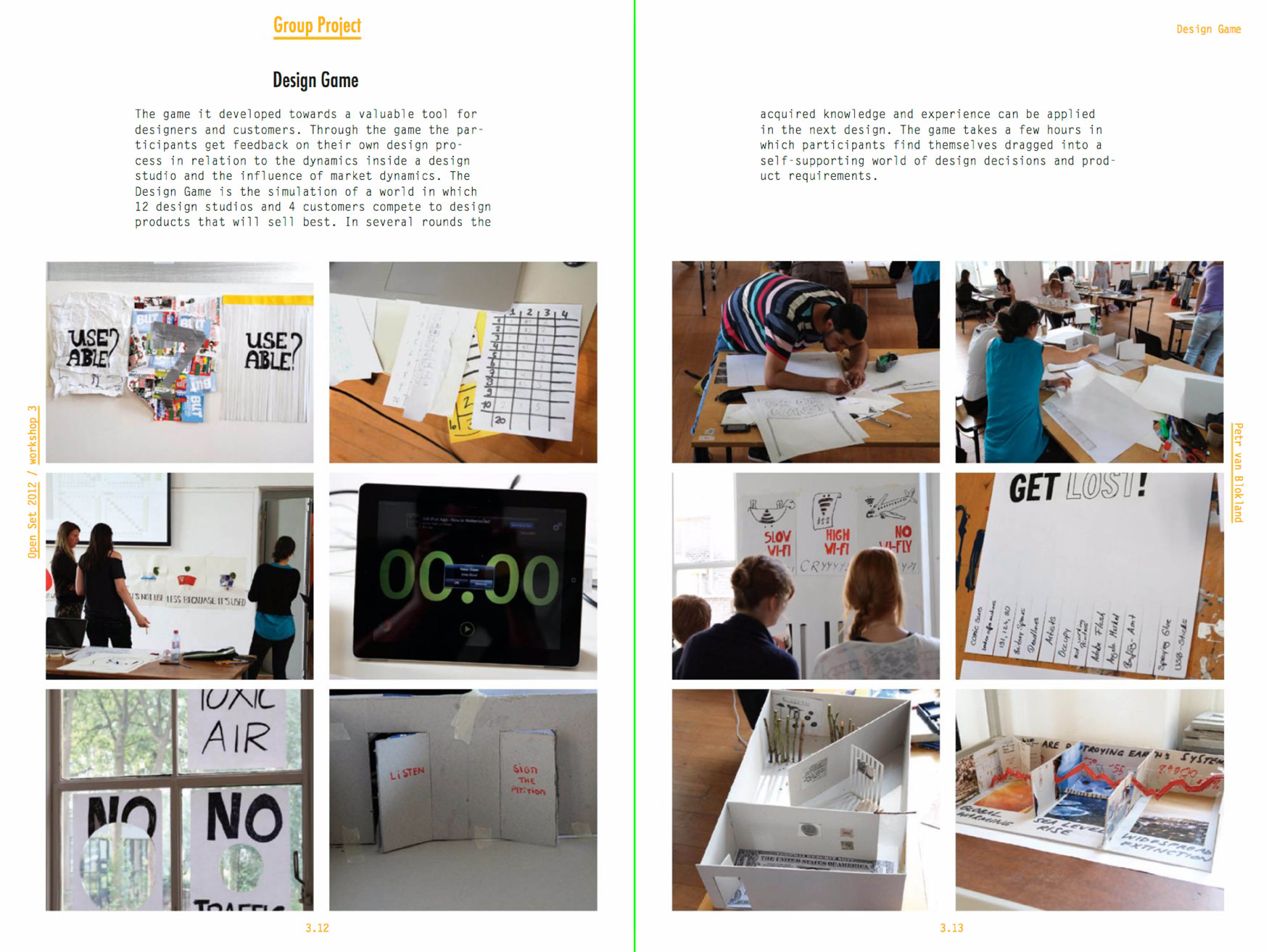
Social Game
28.07.—09.08.2014, Rotterdam, the Netherlands
Workshop by Max Bruinsma & Füsun Türetken. Location V2_.
Workshop Facilitating Conditions for Social Processes by Annelys de Vet. Location V2_.
Workshop Practice Based Research: Can you park here? by Karel van der Waarde. Location Showroom MAMA.
Workshop Facilitating Conditions for Social Processes by Annelys de Vet. Location V2_.
Workshop Mapping Rotterdam by Latitudes. Location Witte de With Center for Contemporary Art.
Workshop Word Building by Andy Altmann. Location TENT.
Workshop Communication of Trust by Jeanne van Heeswijk.